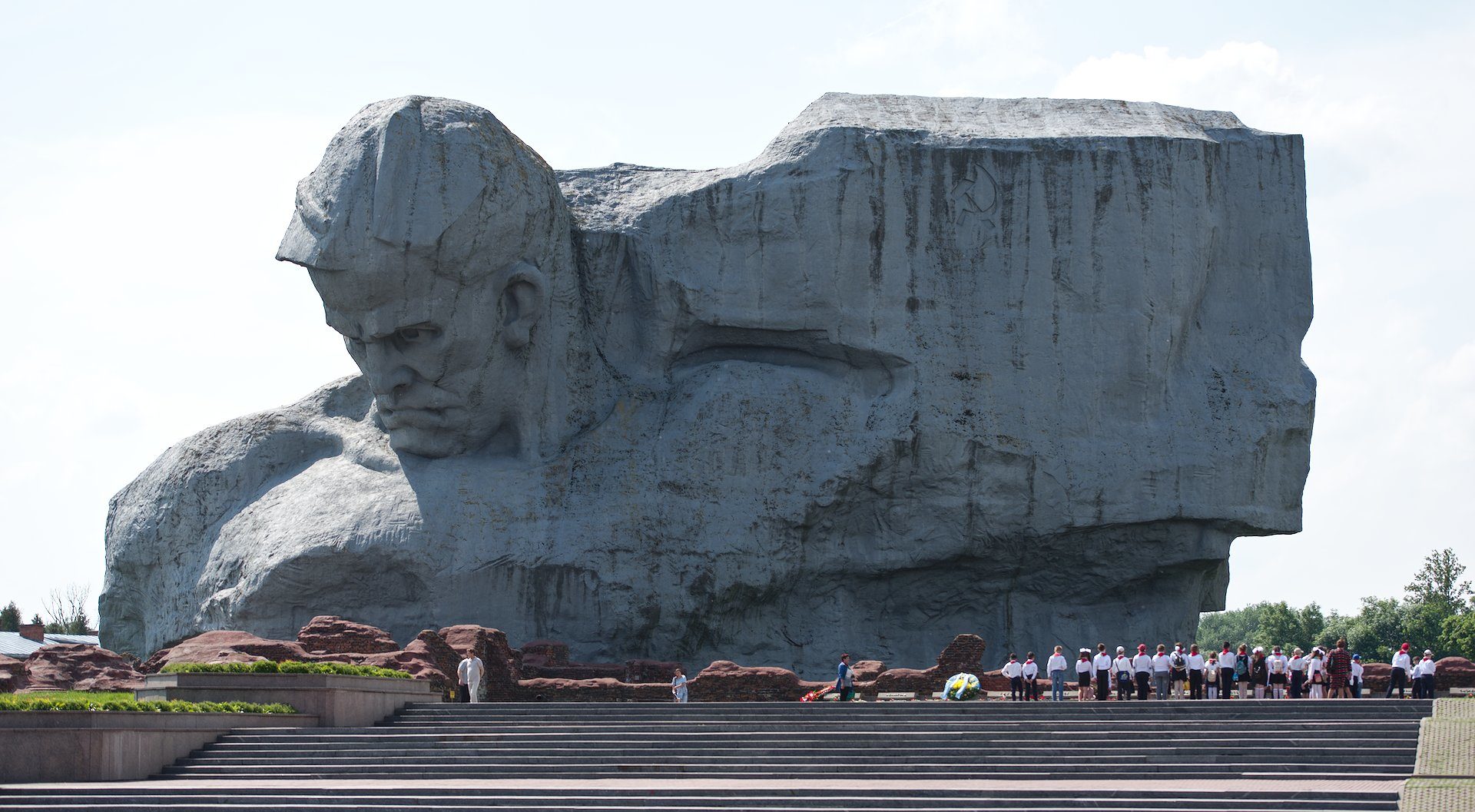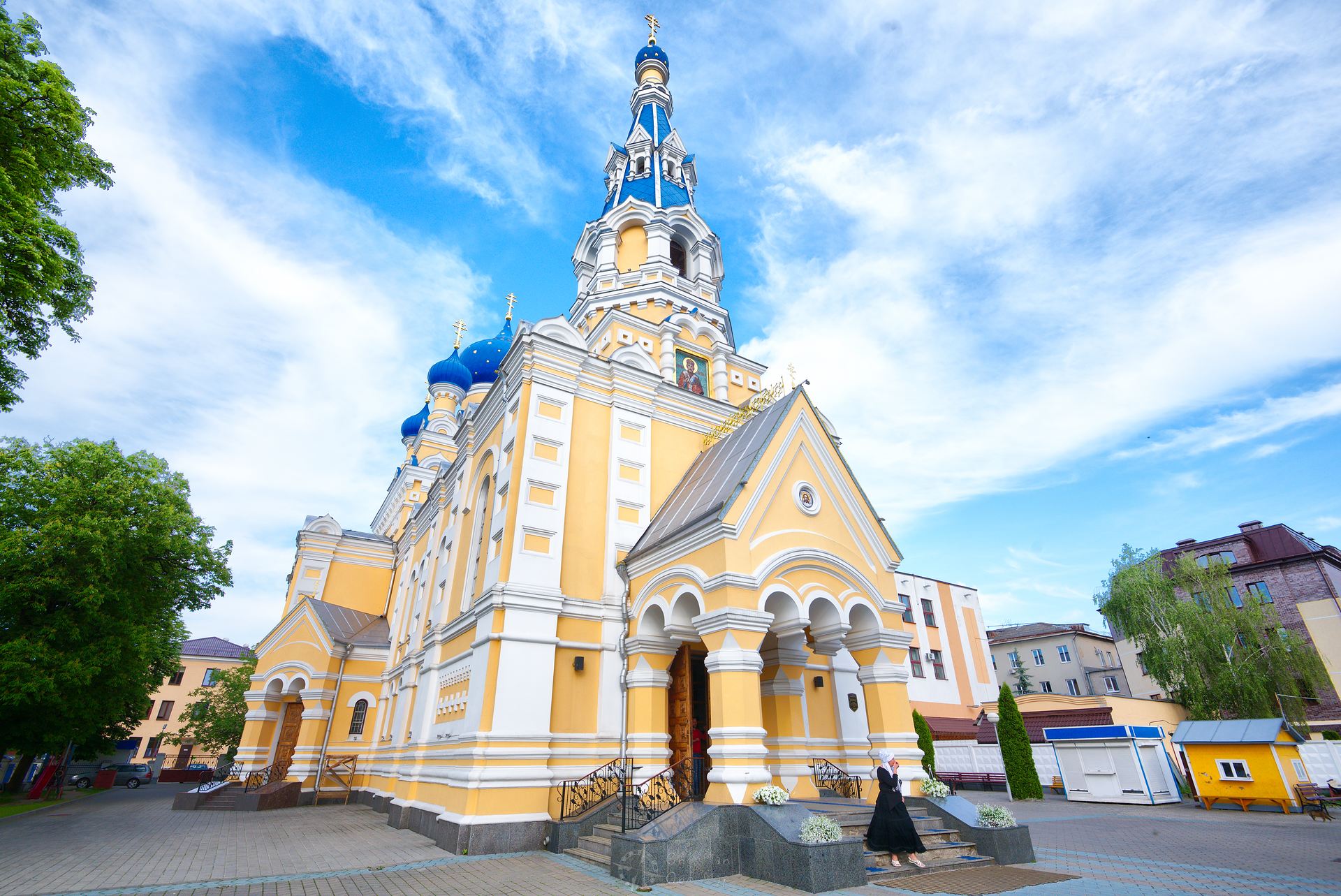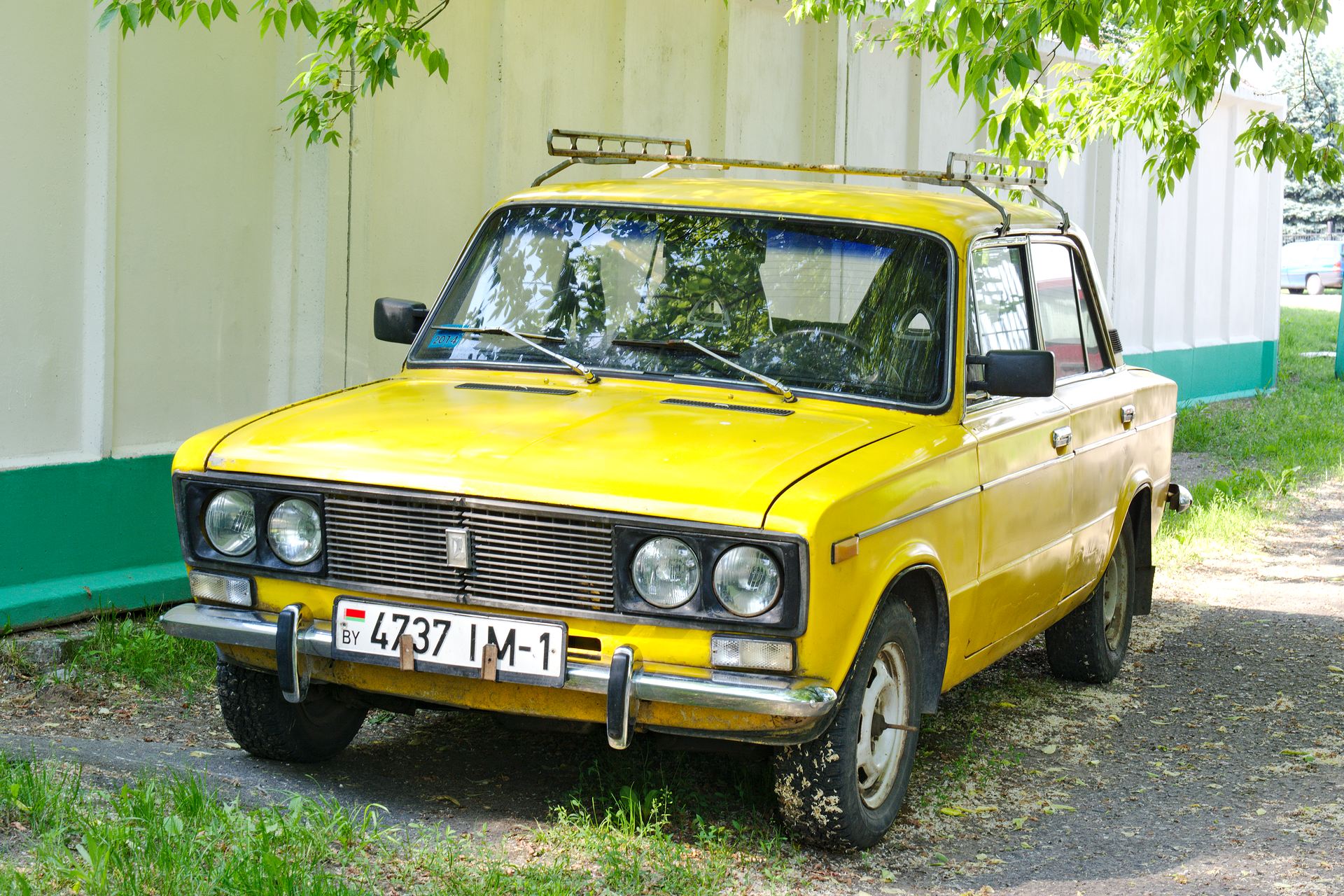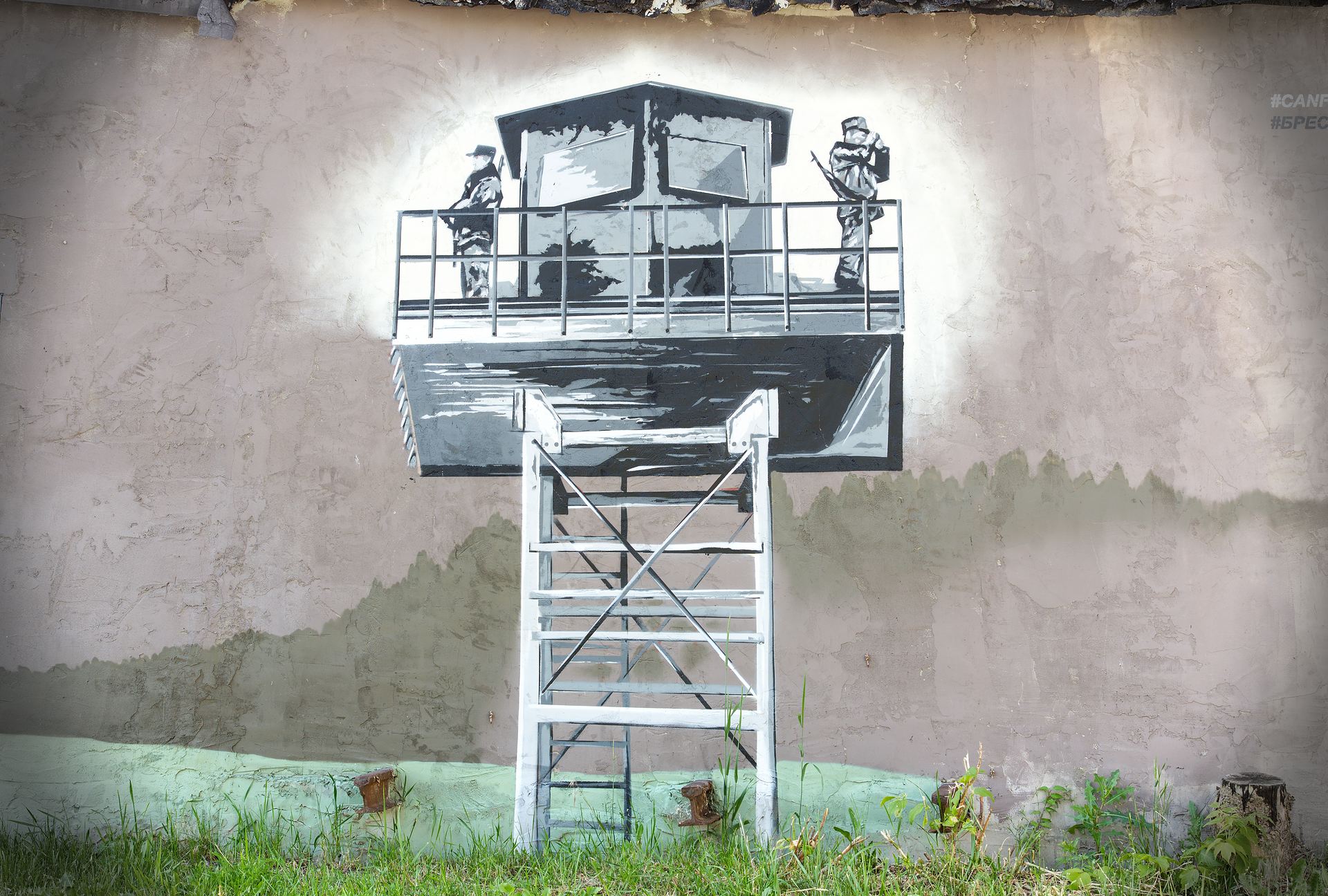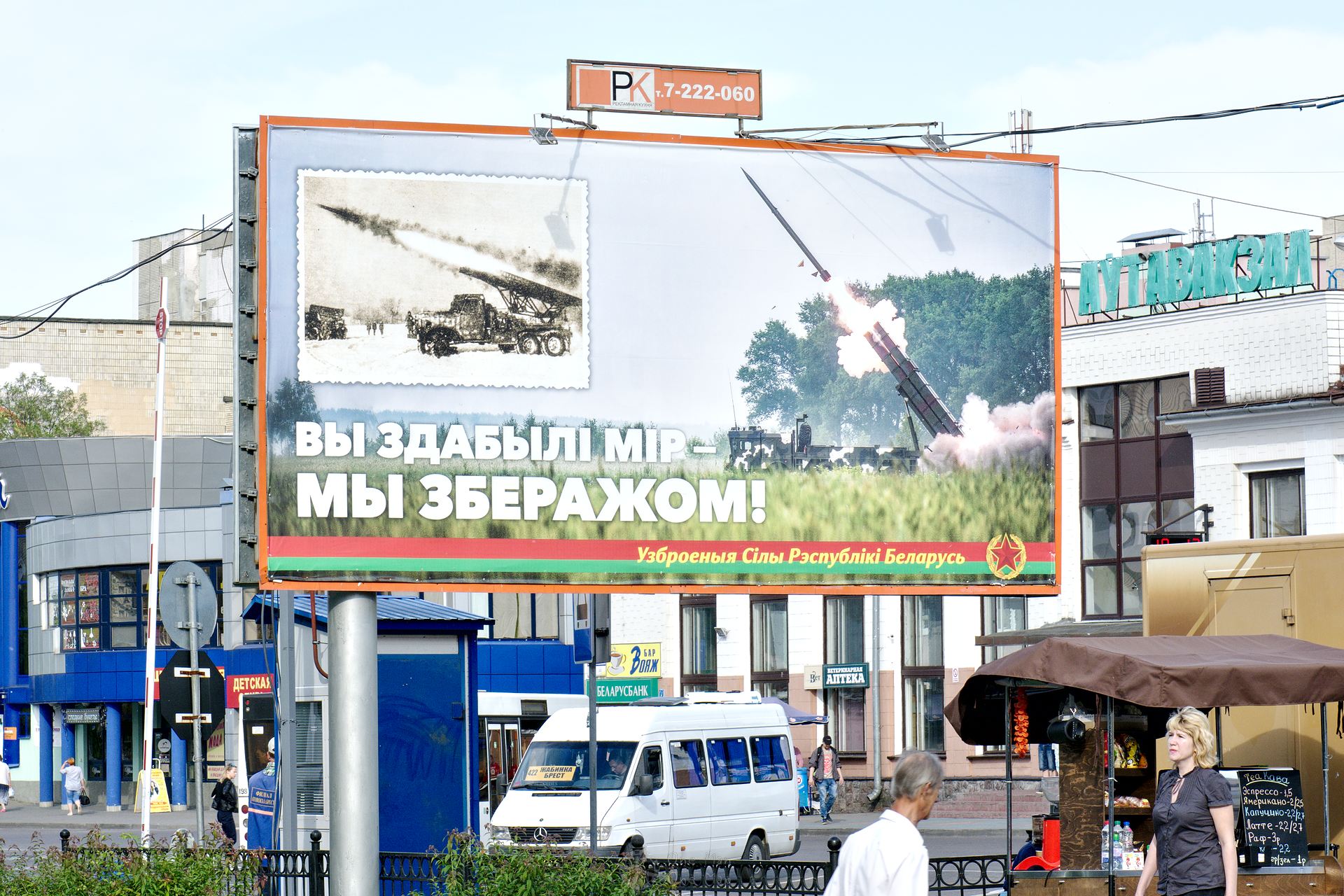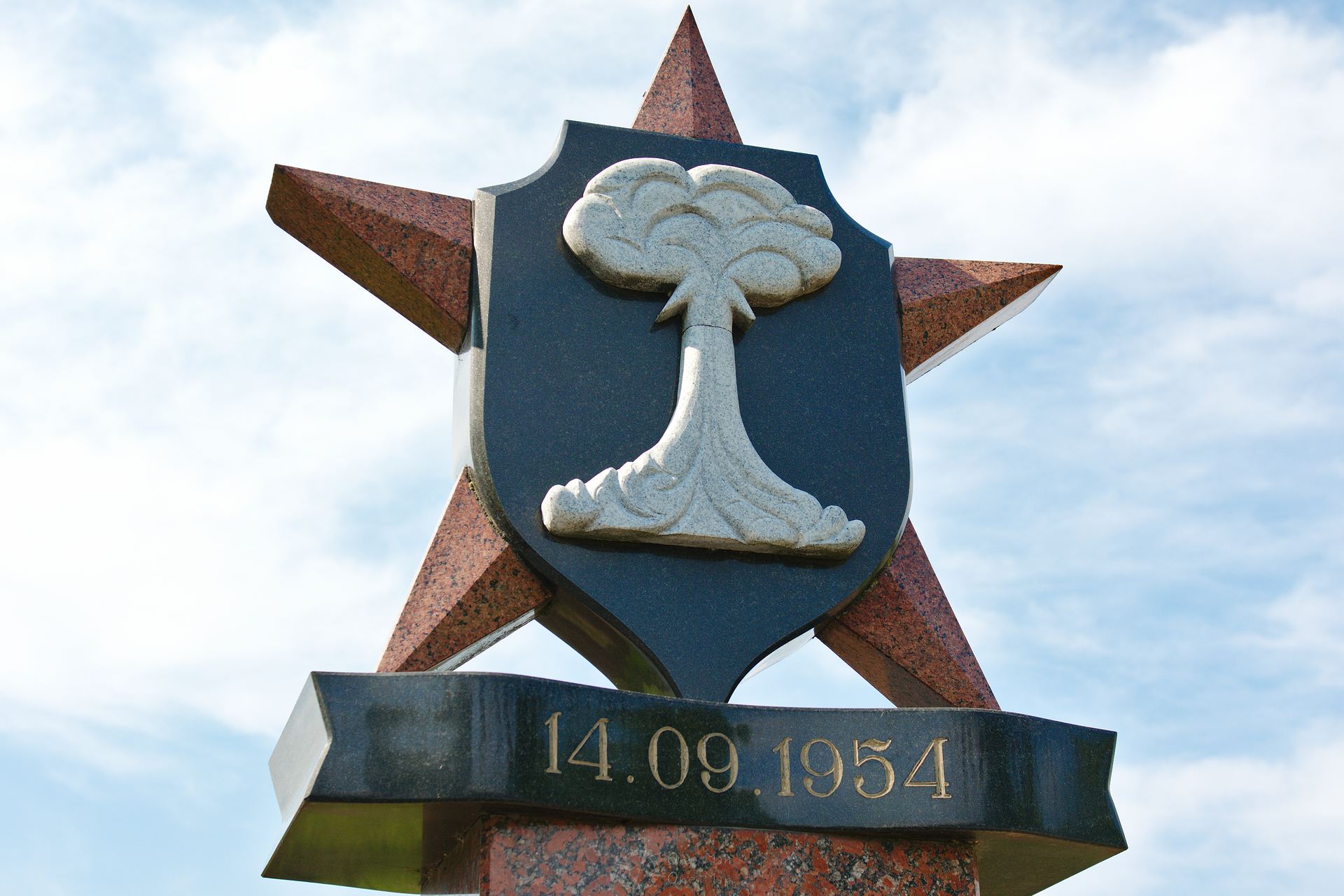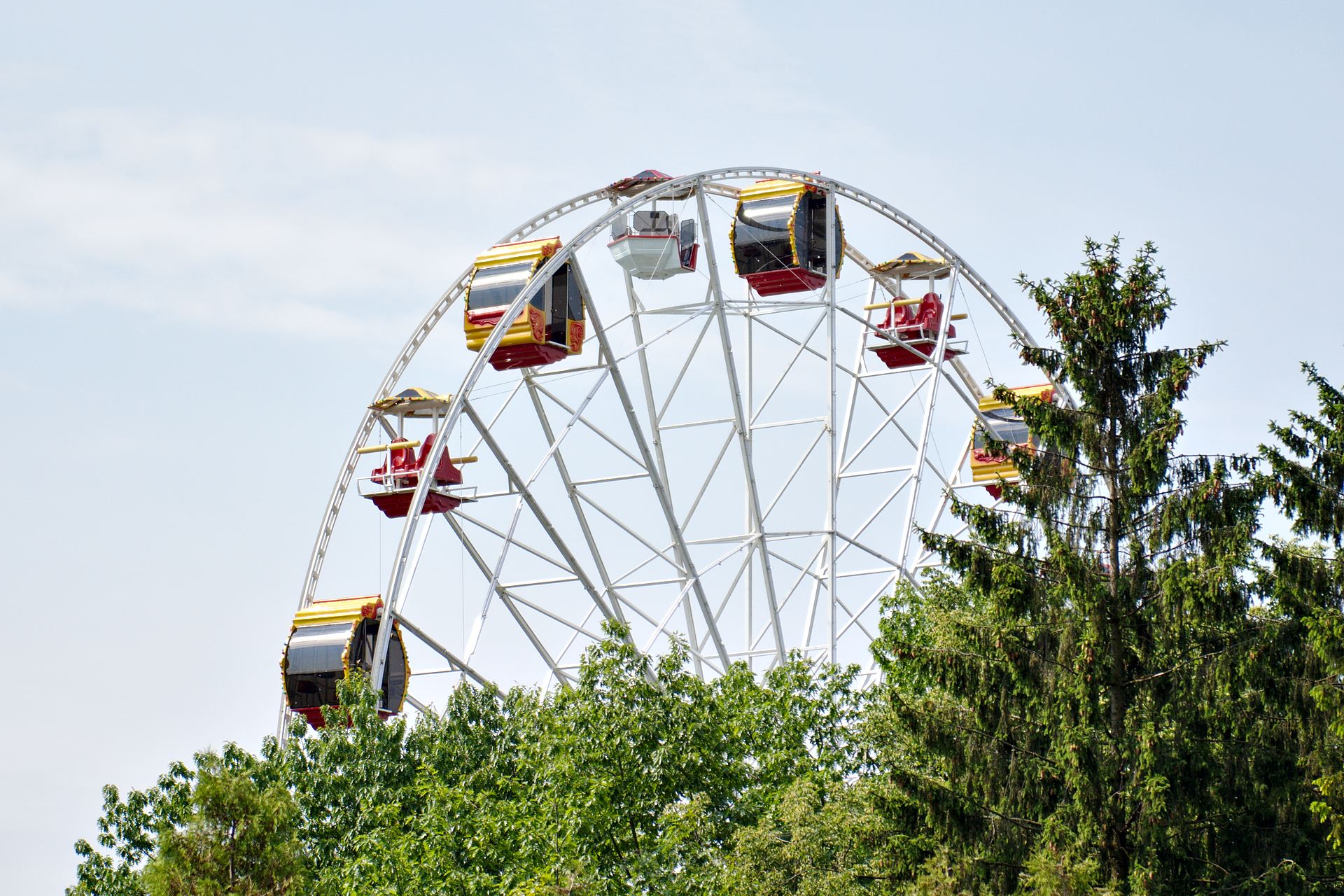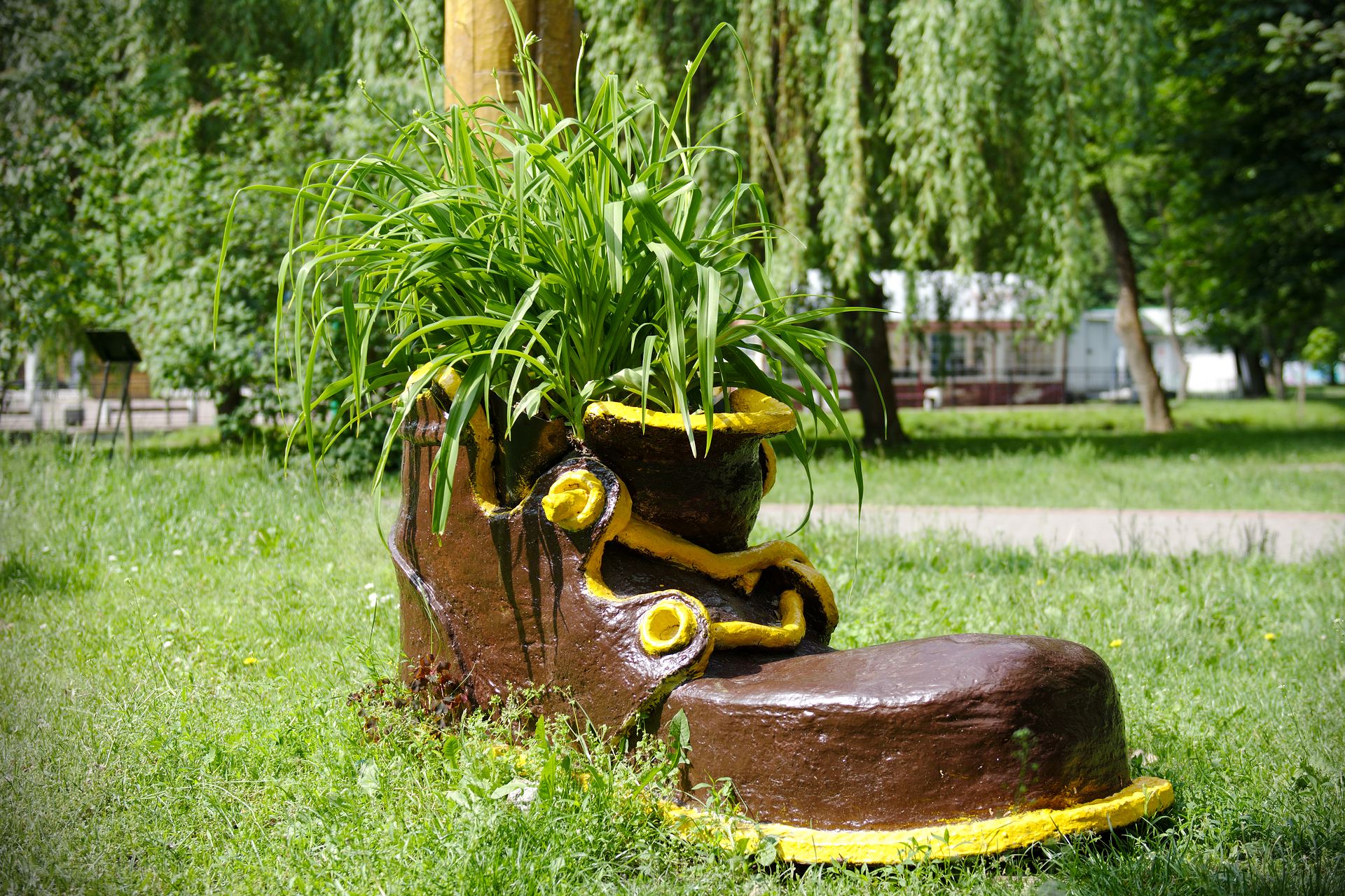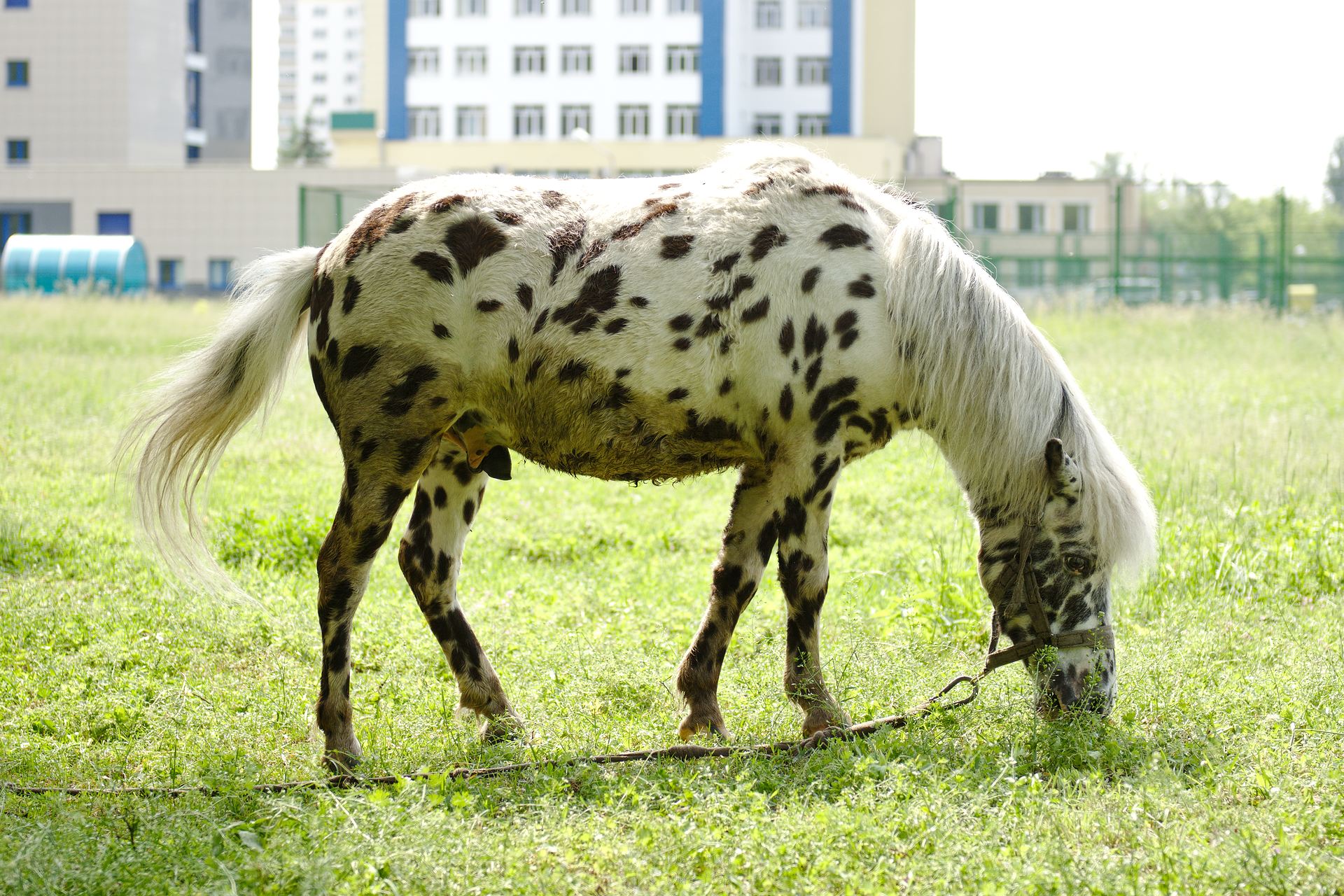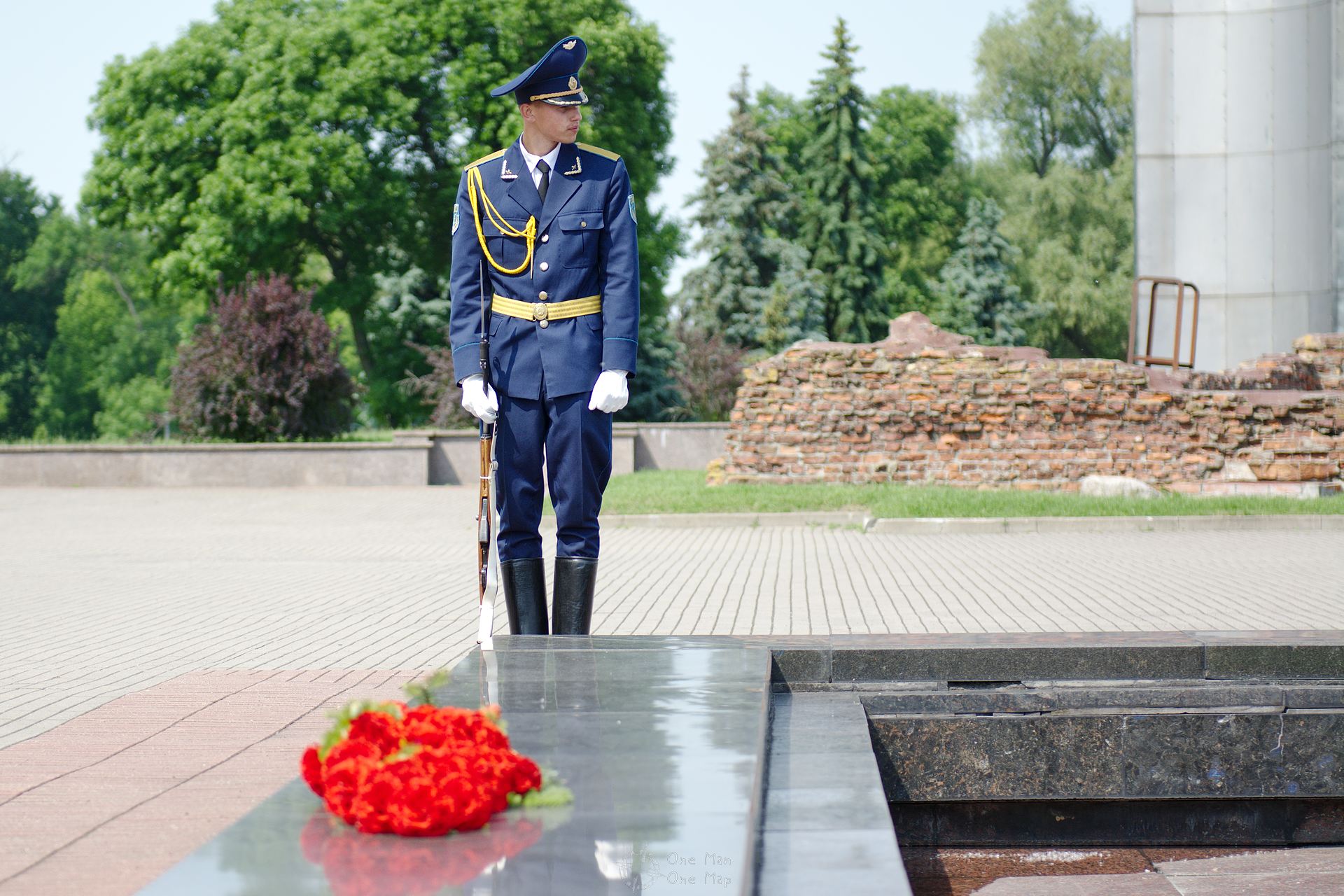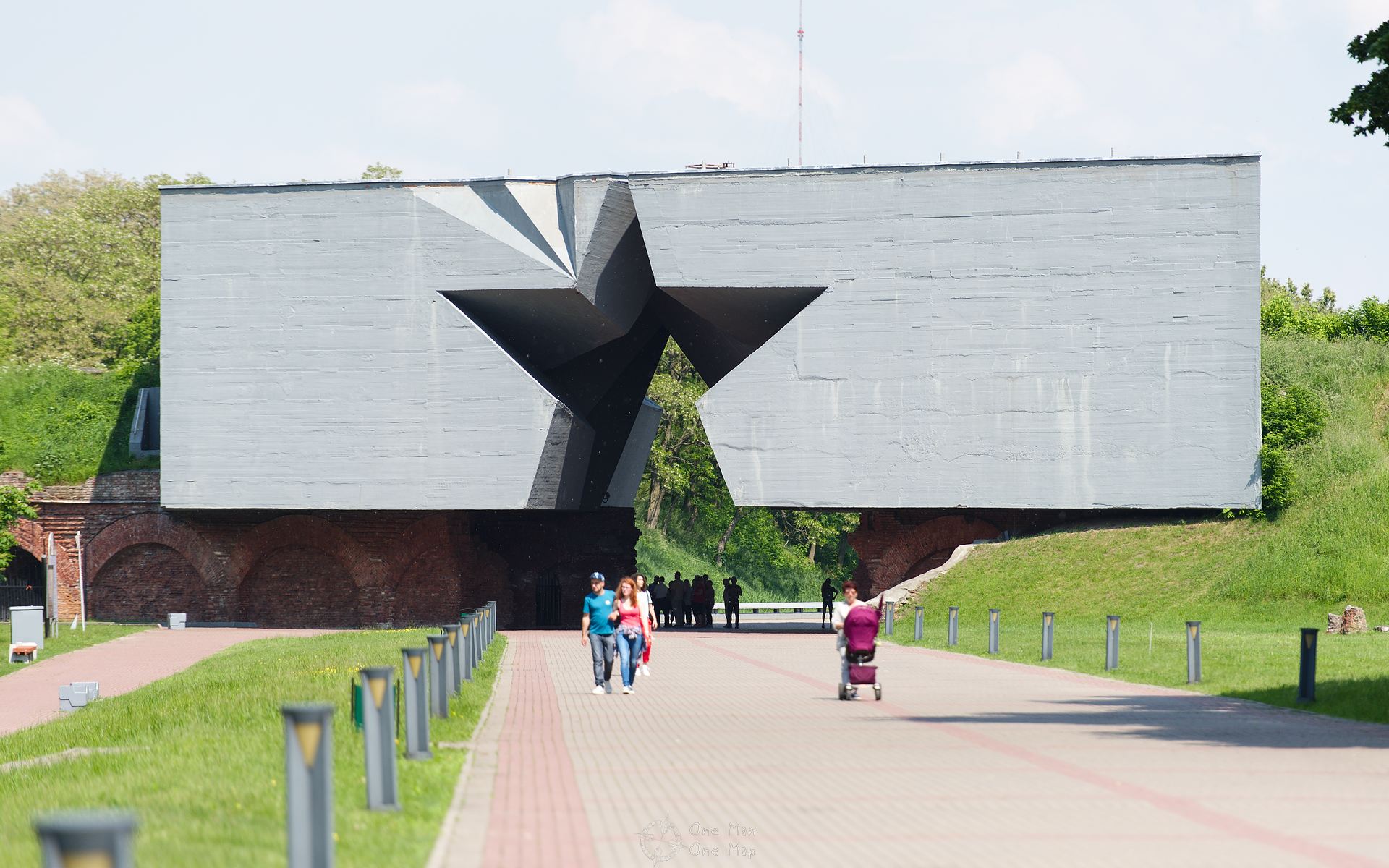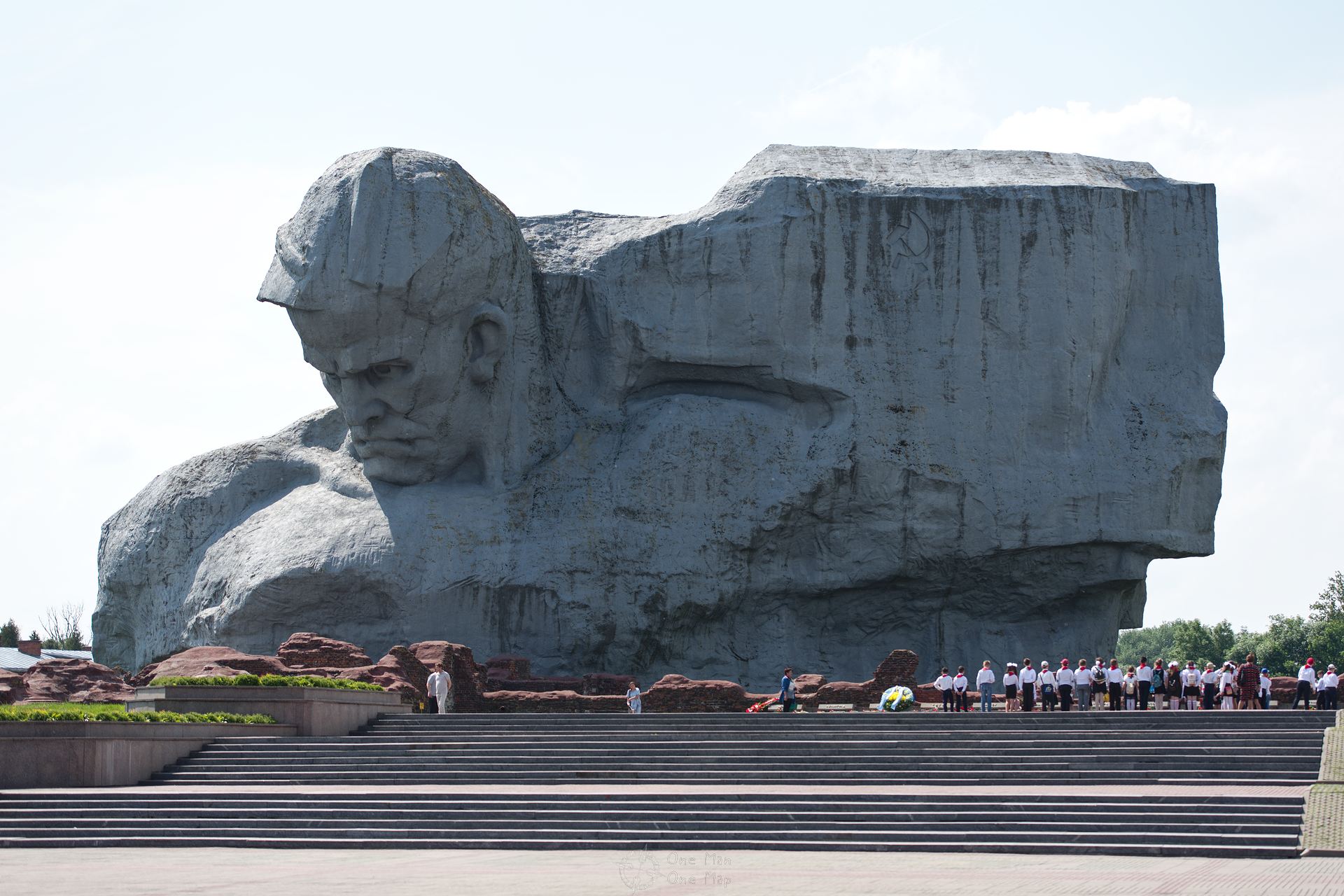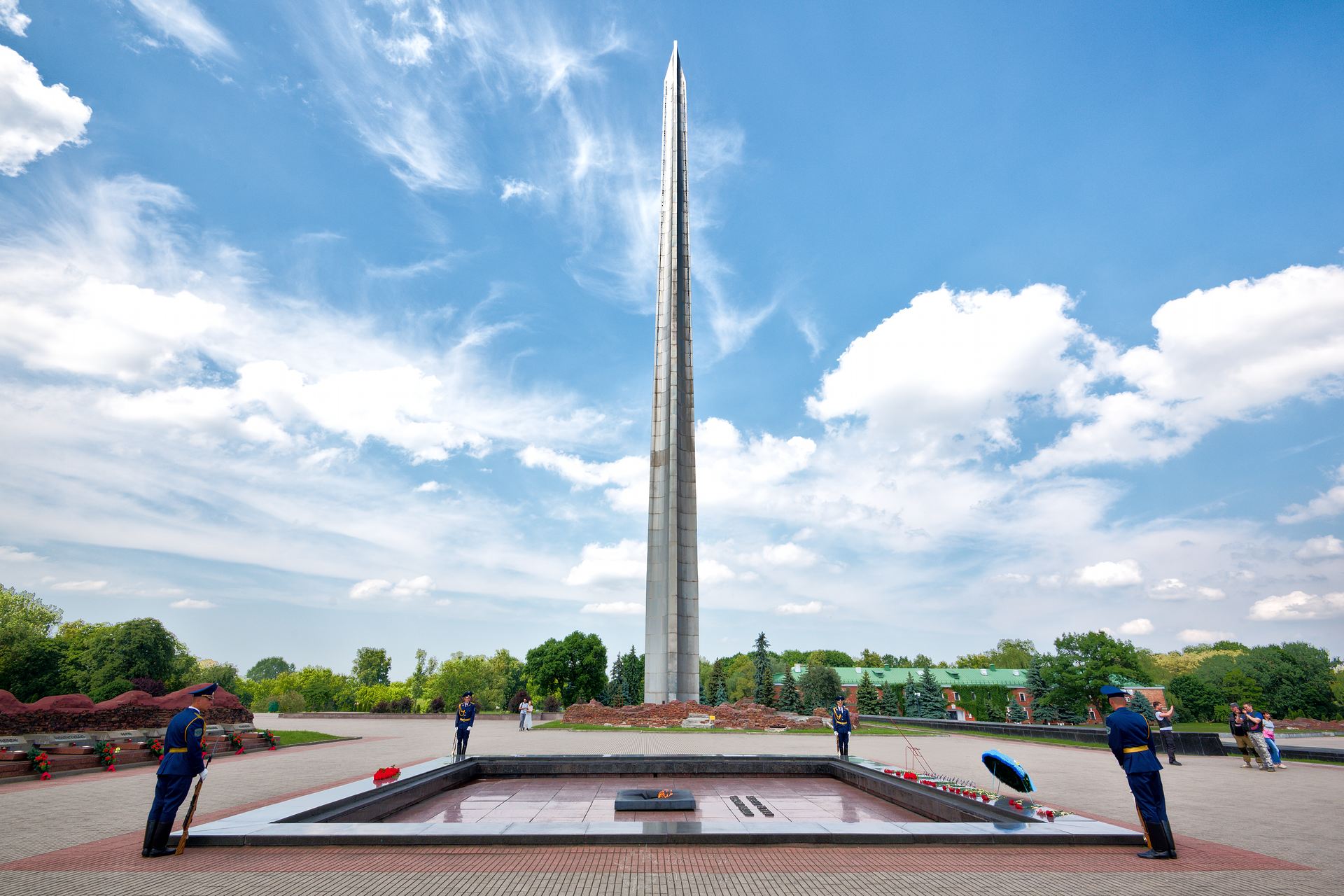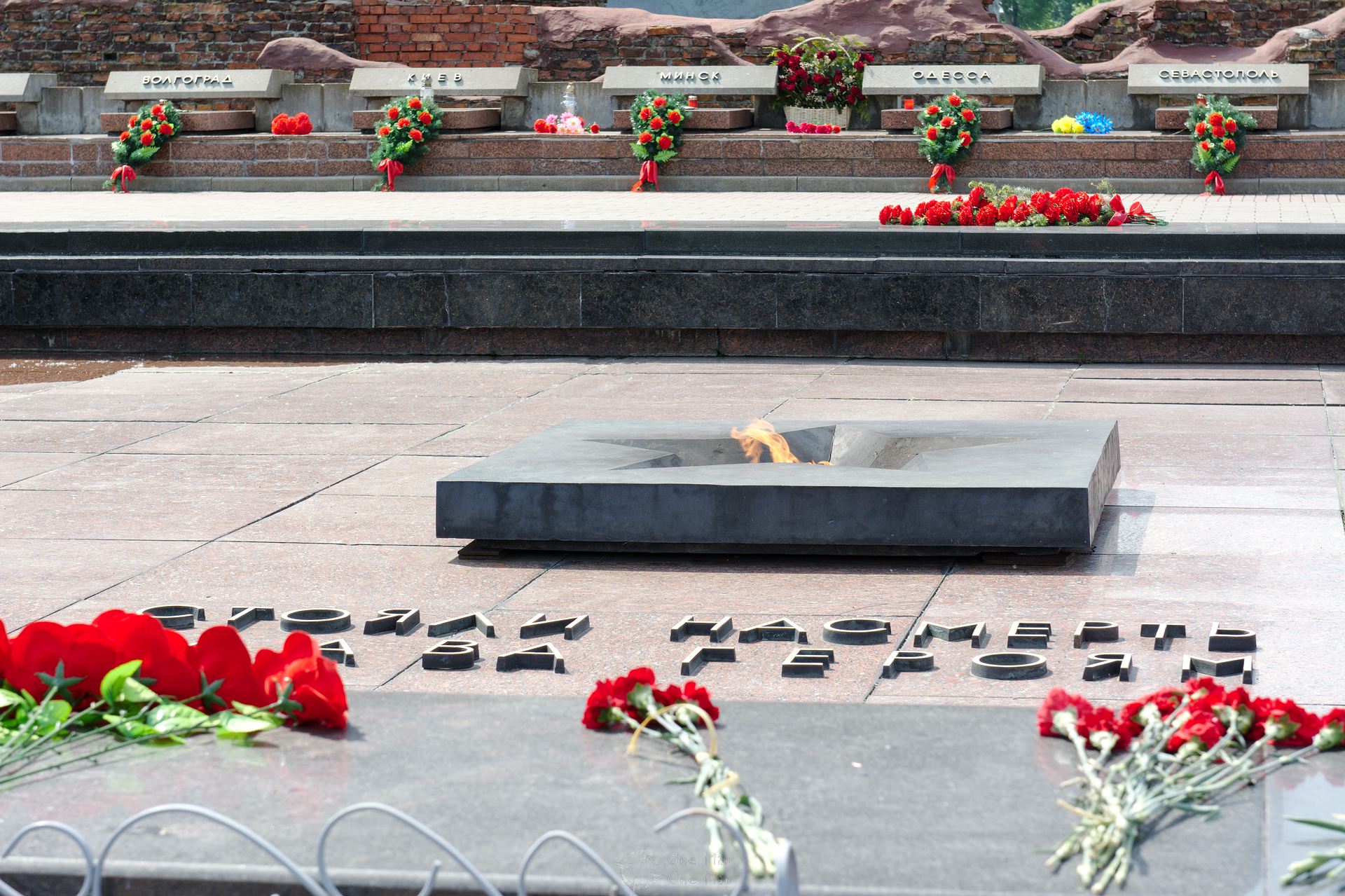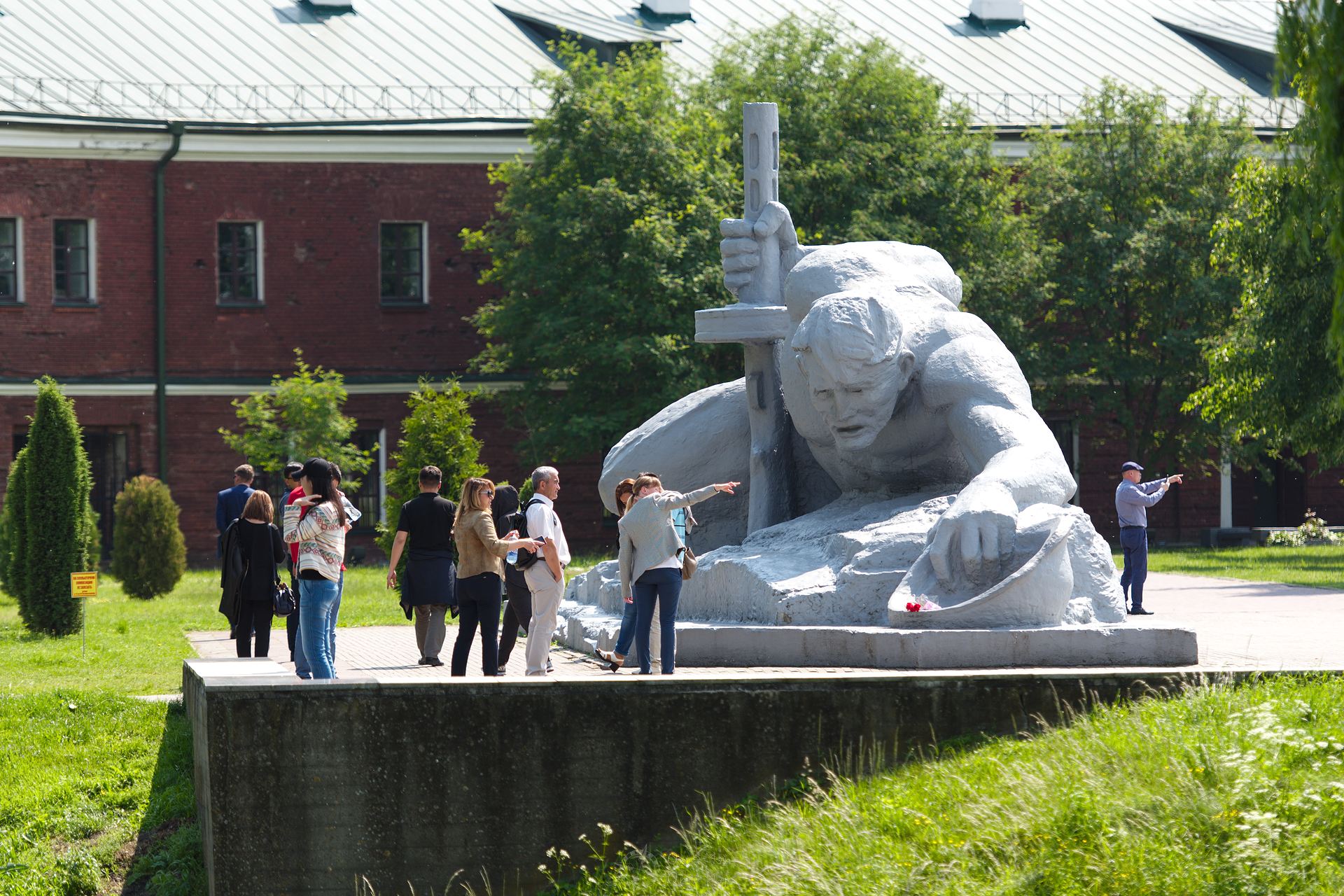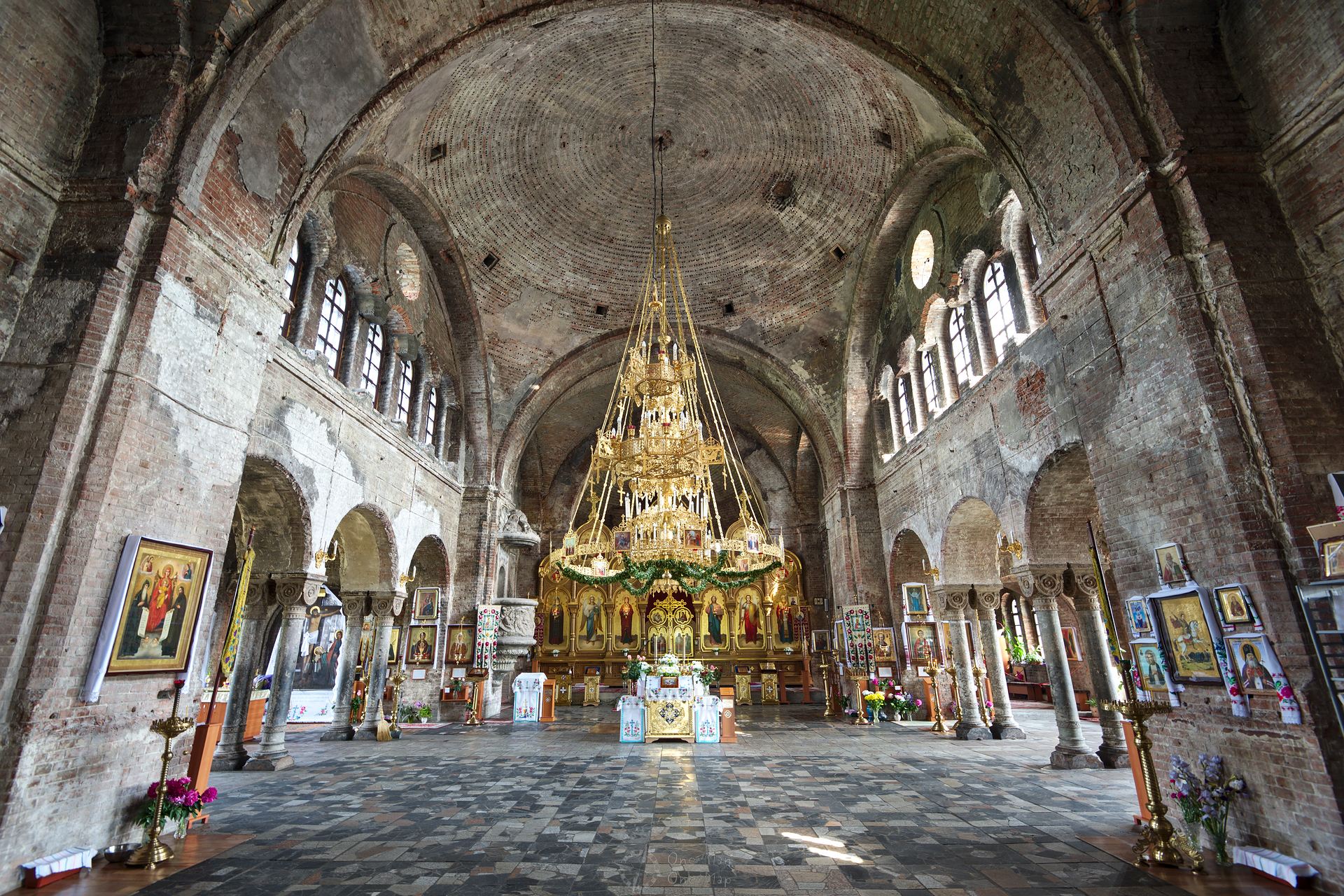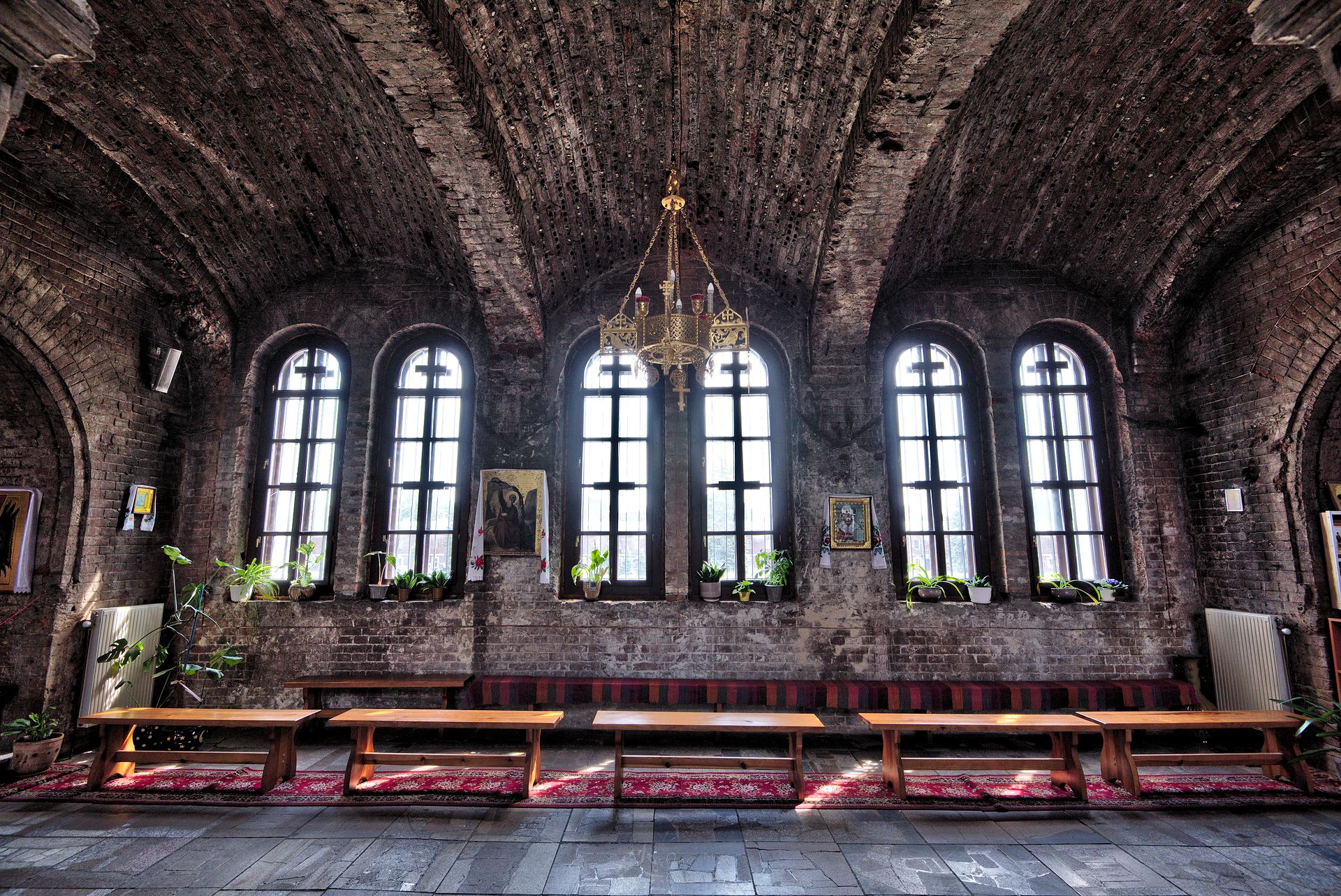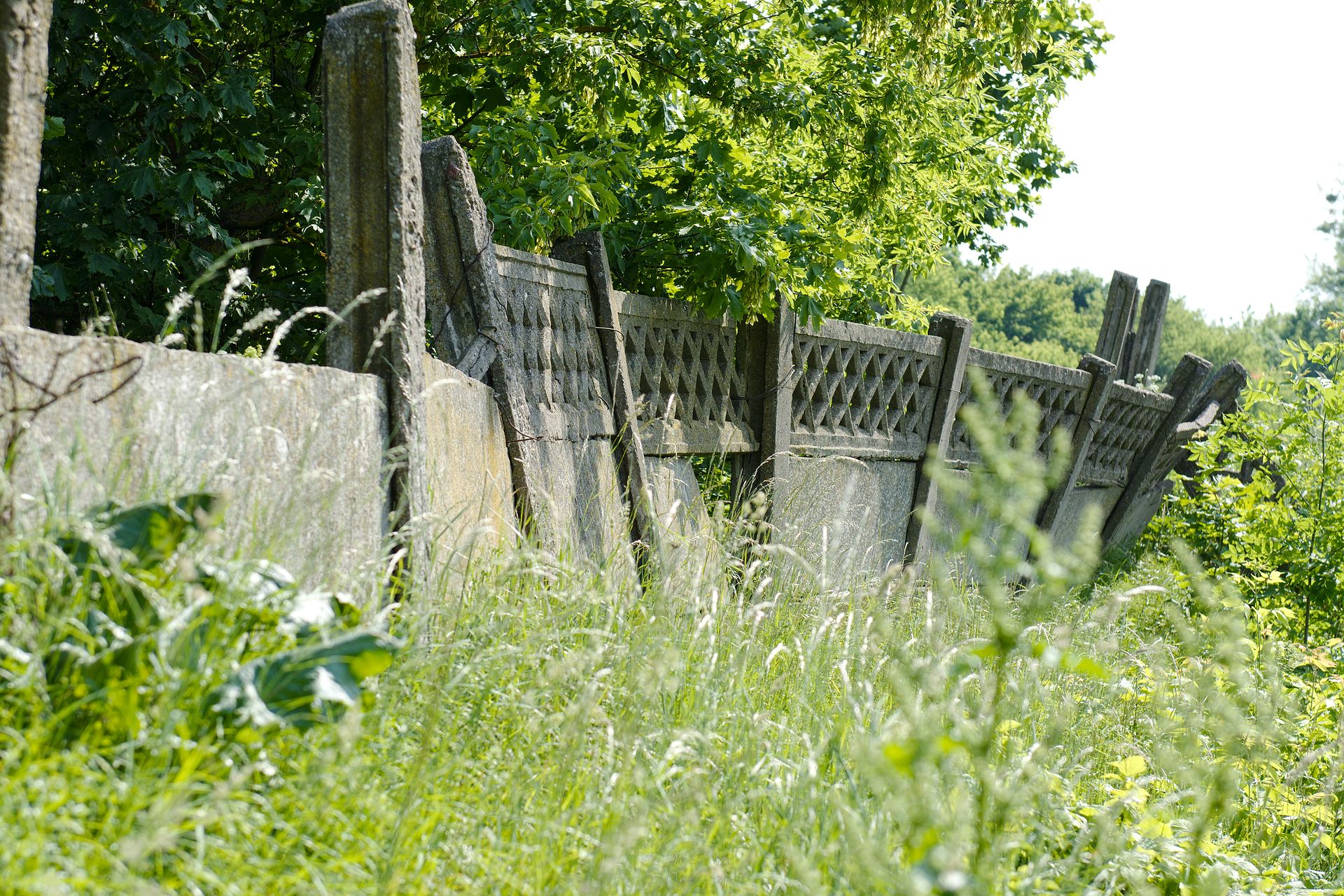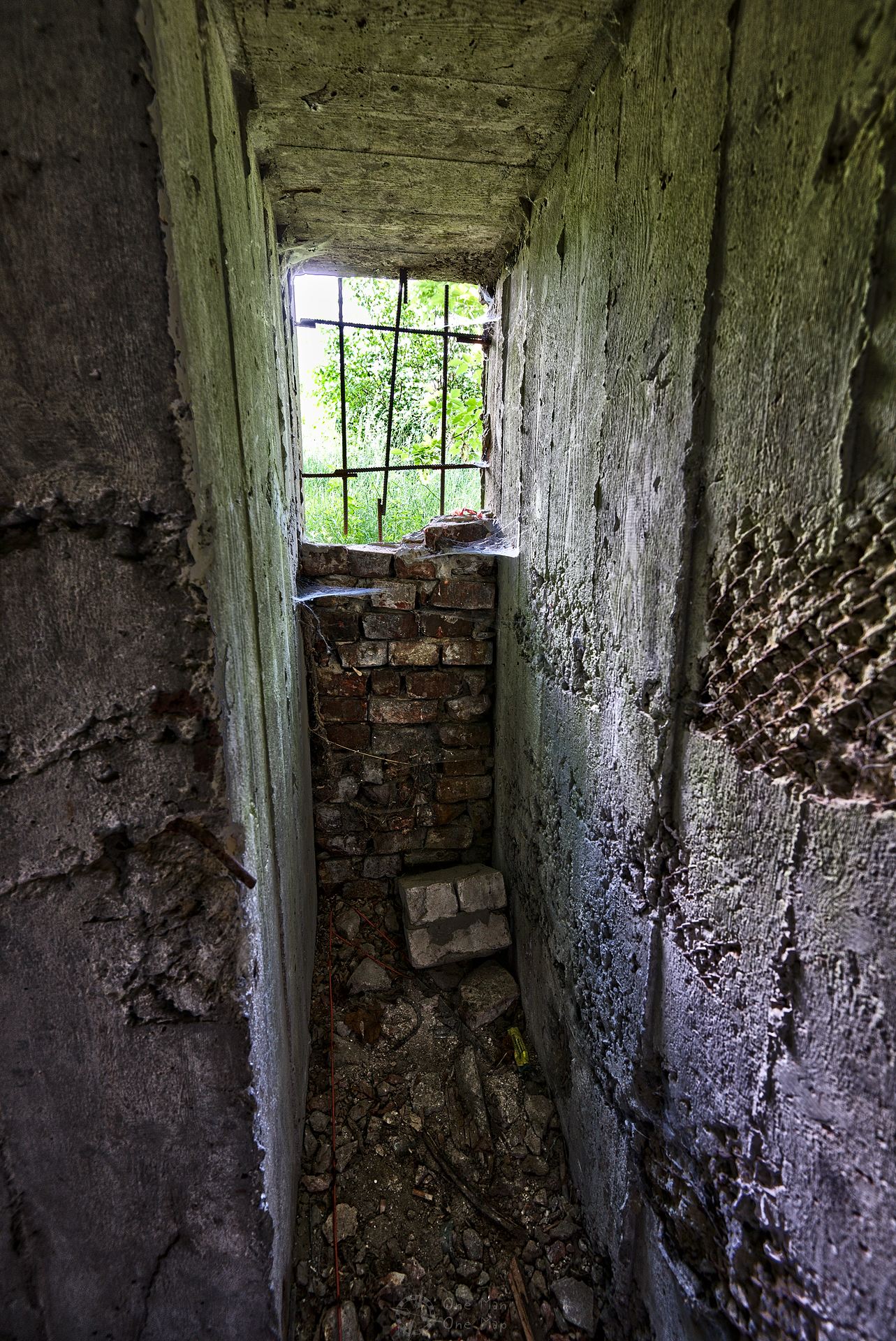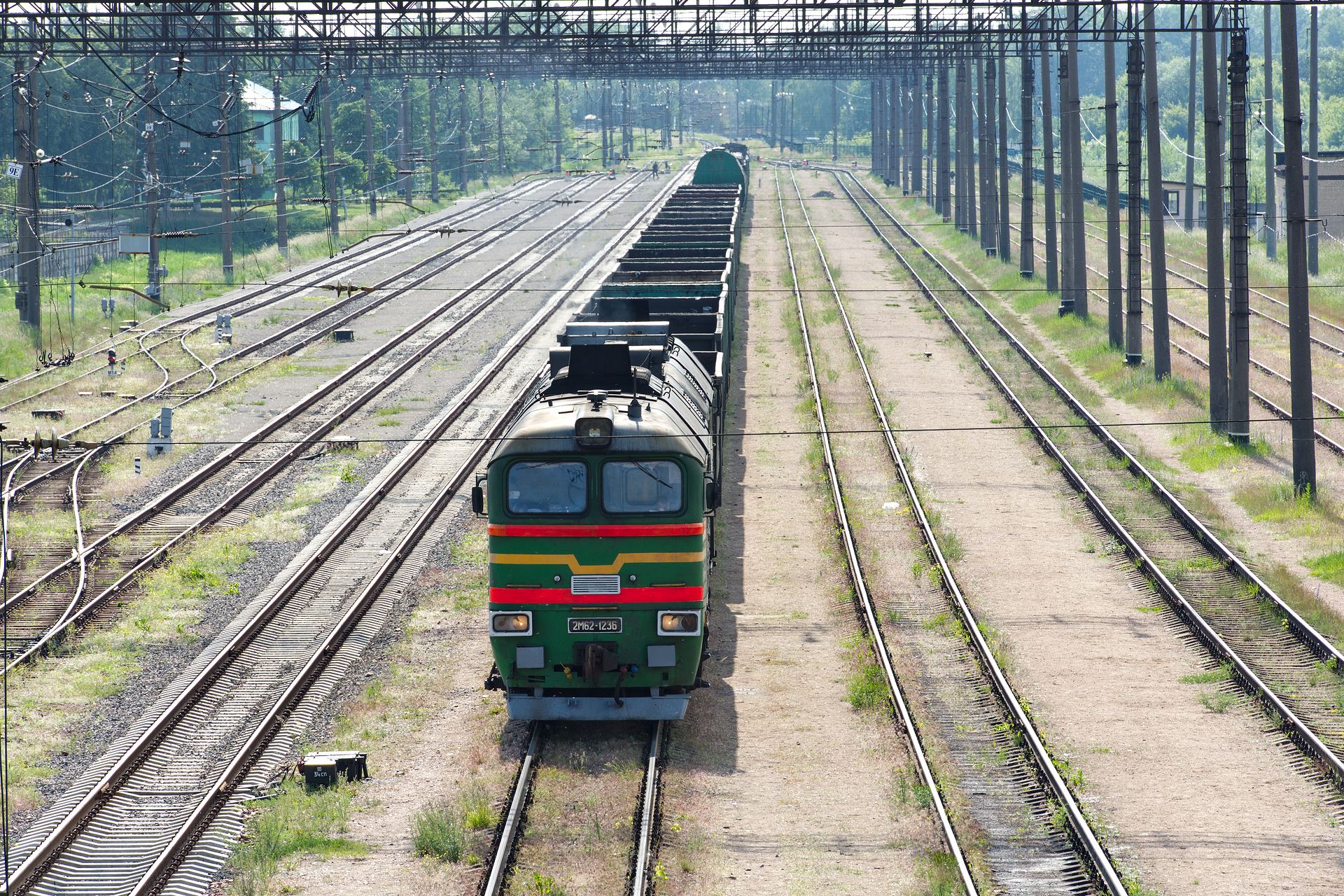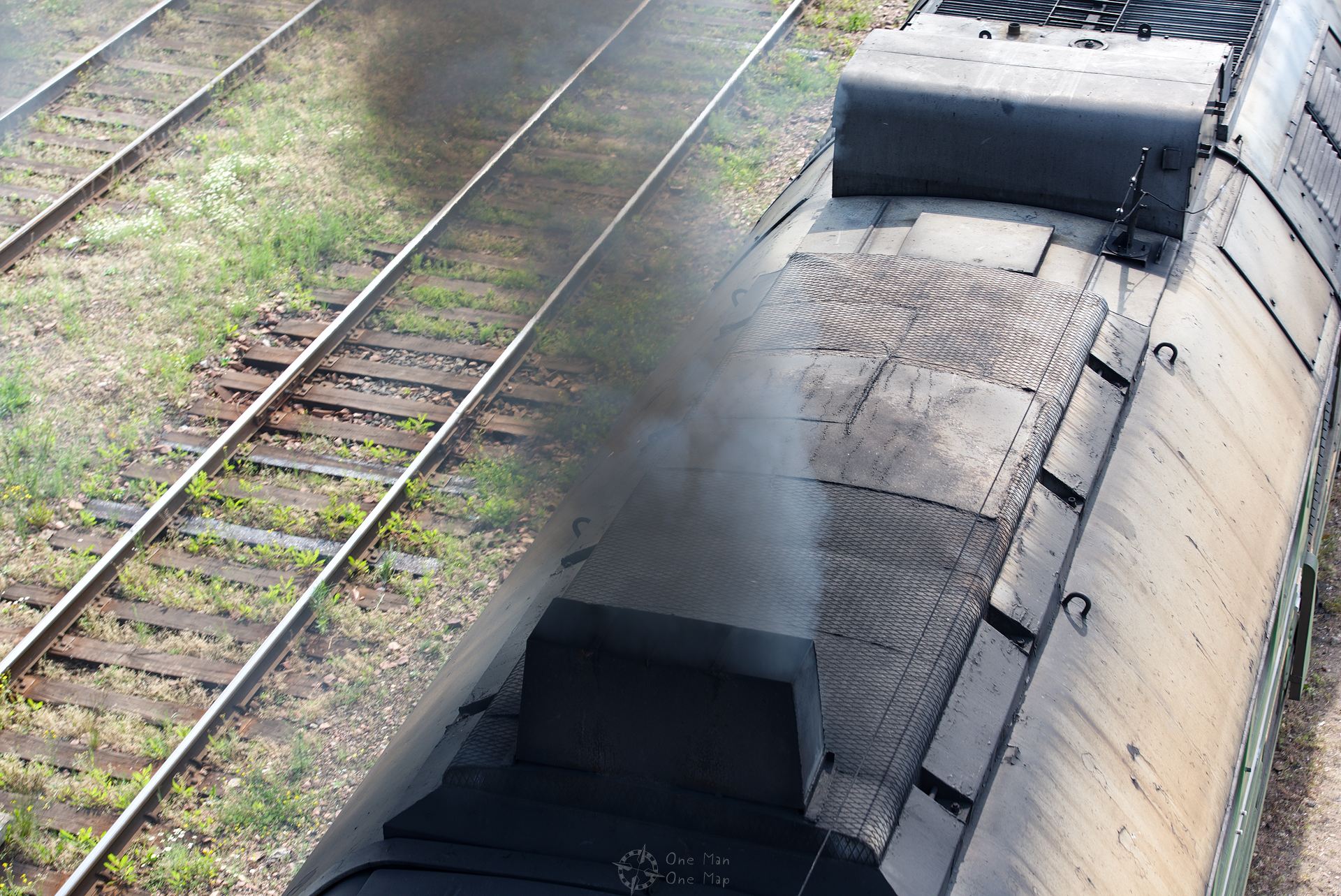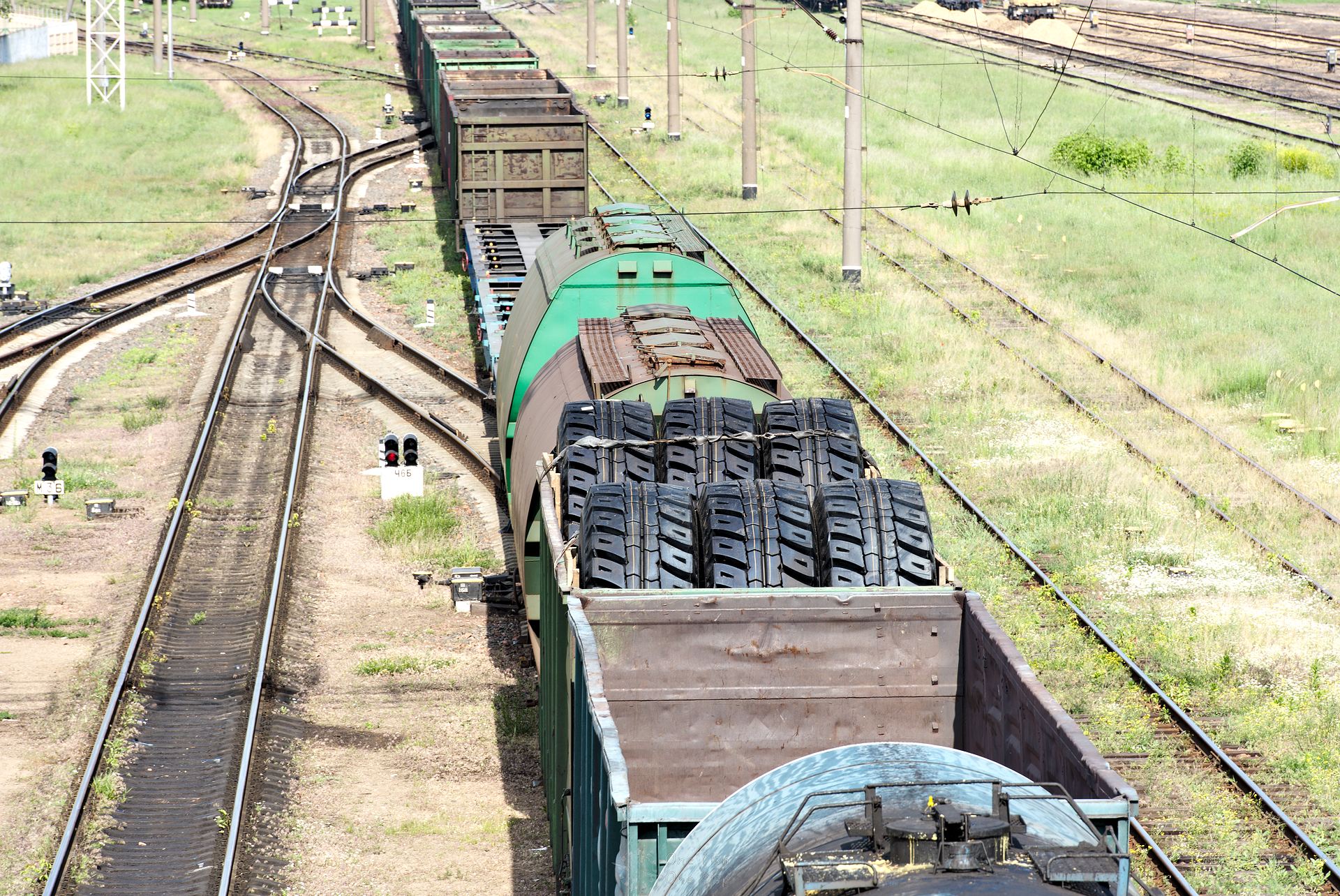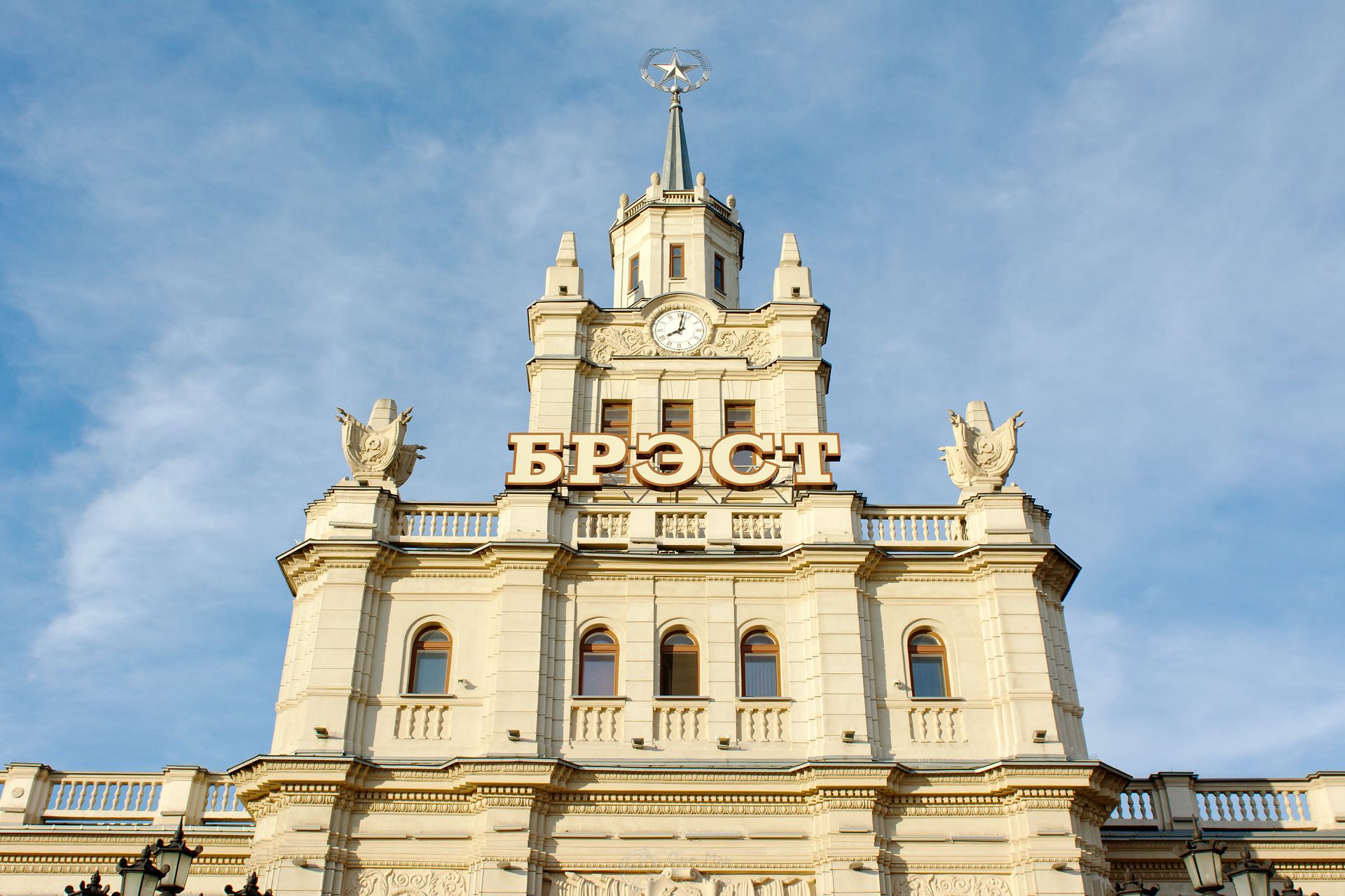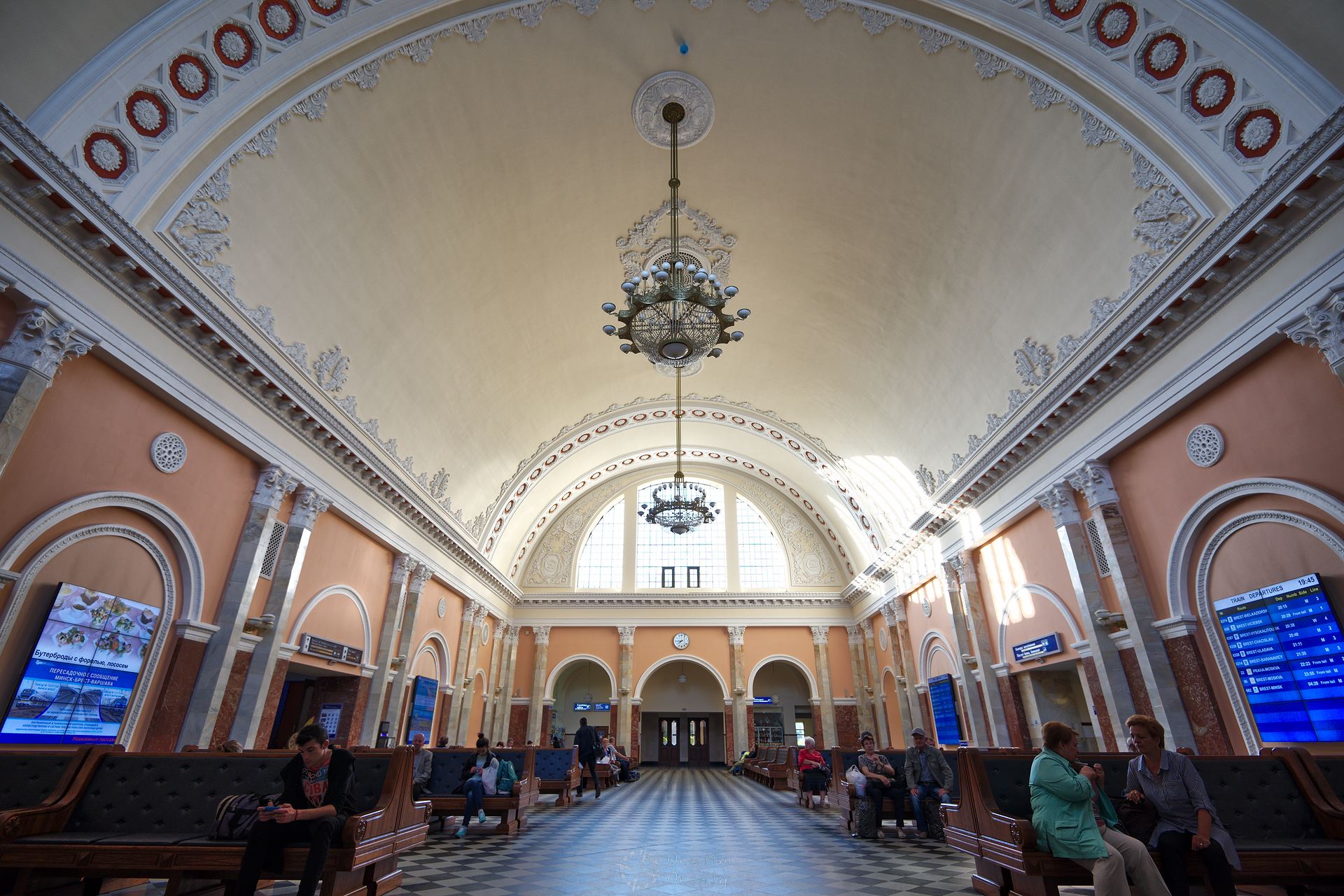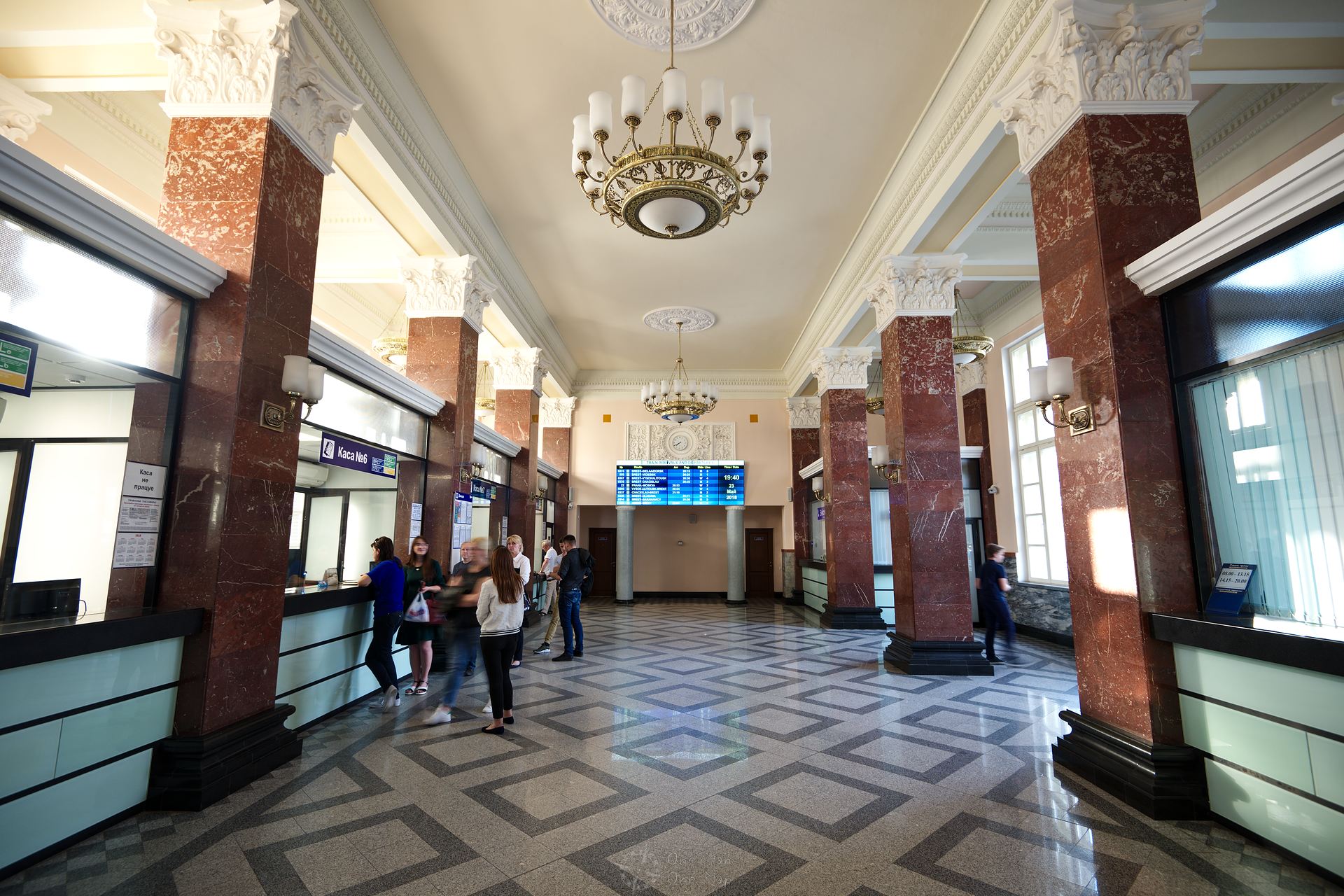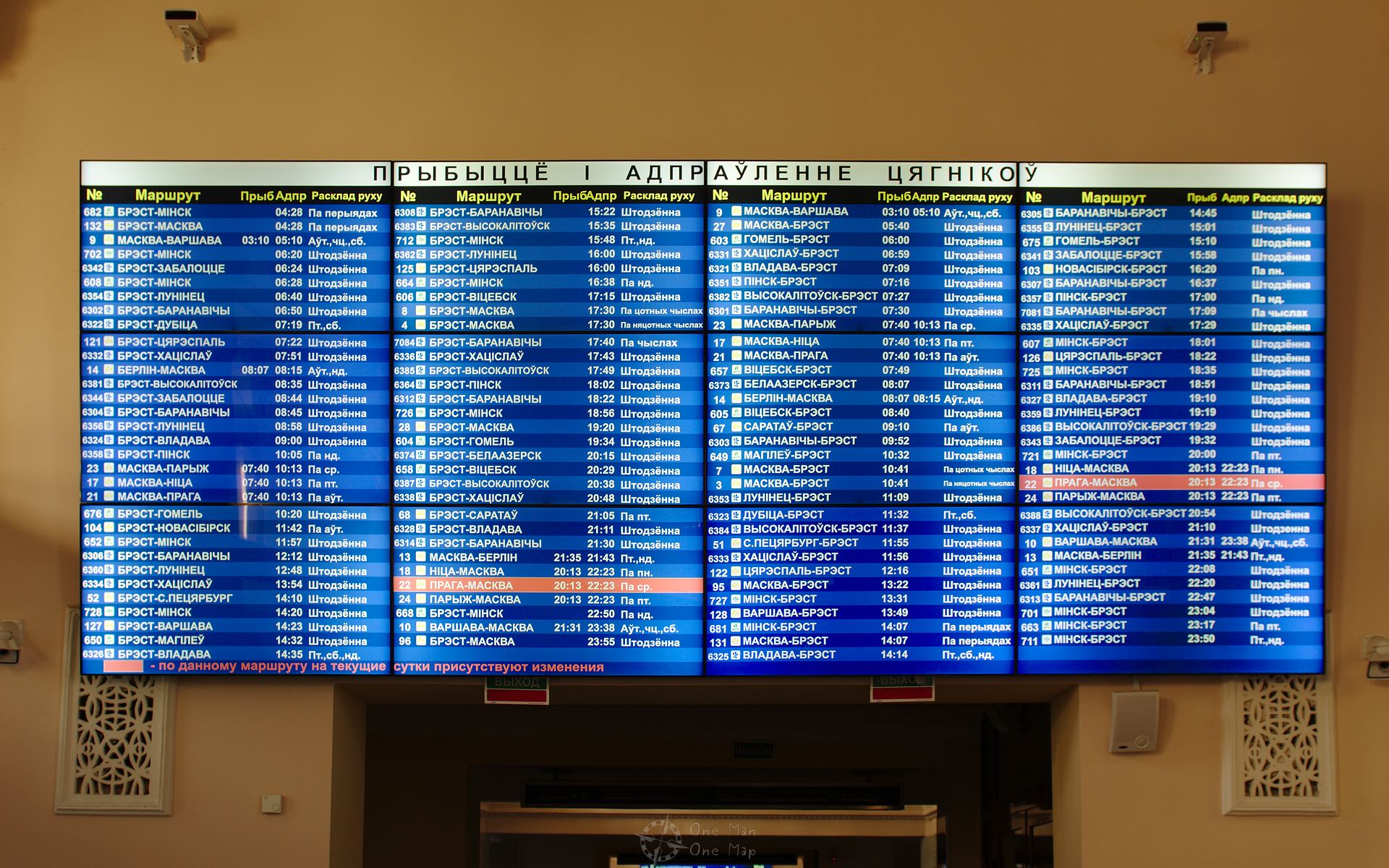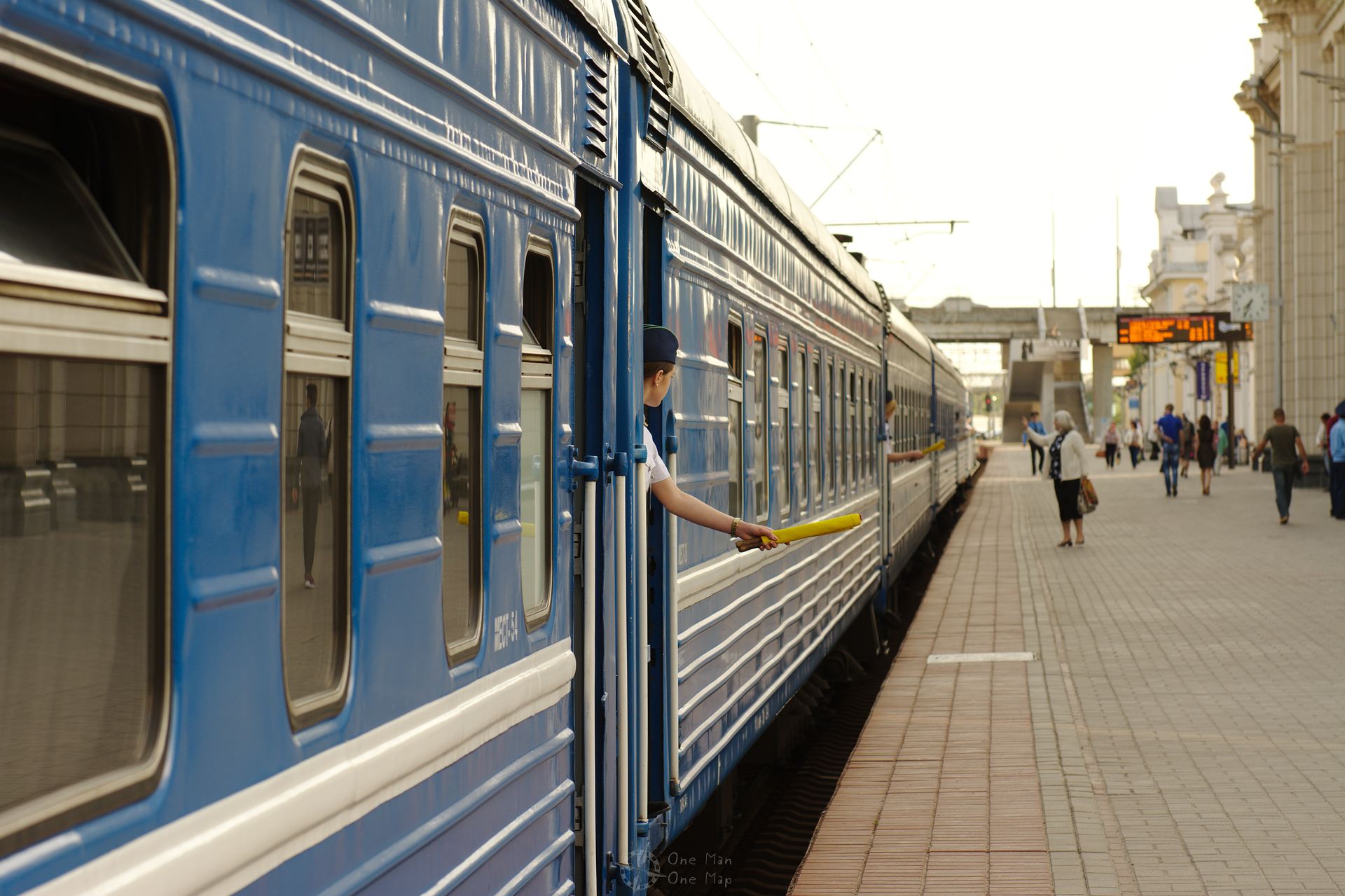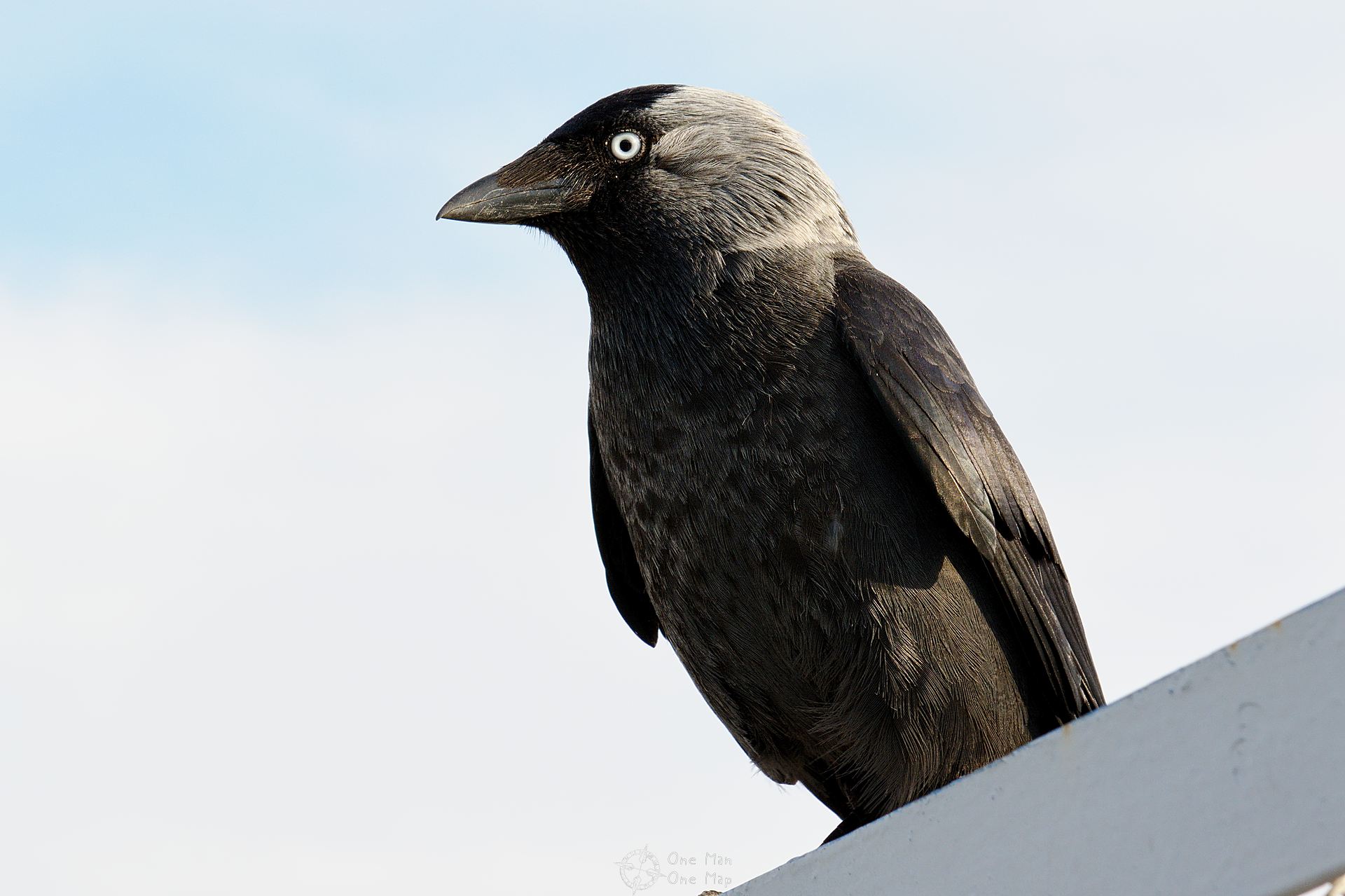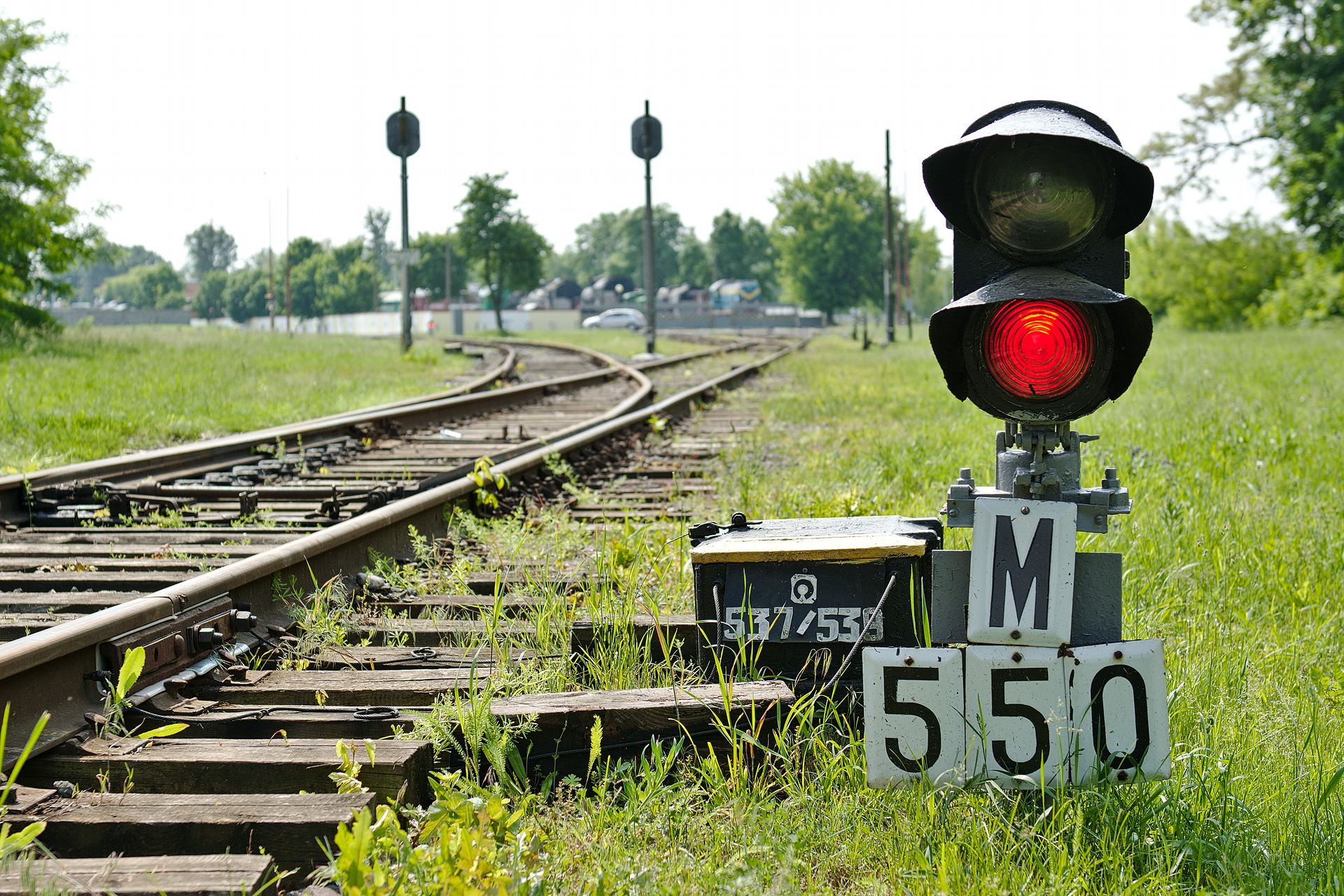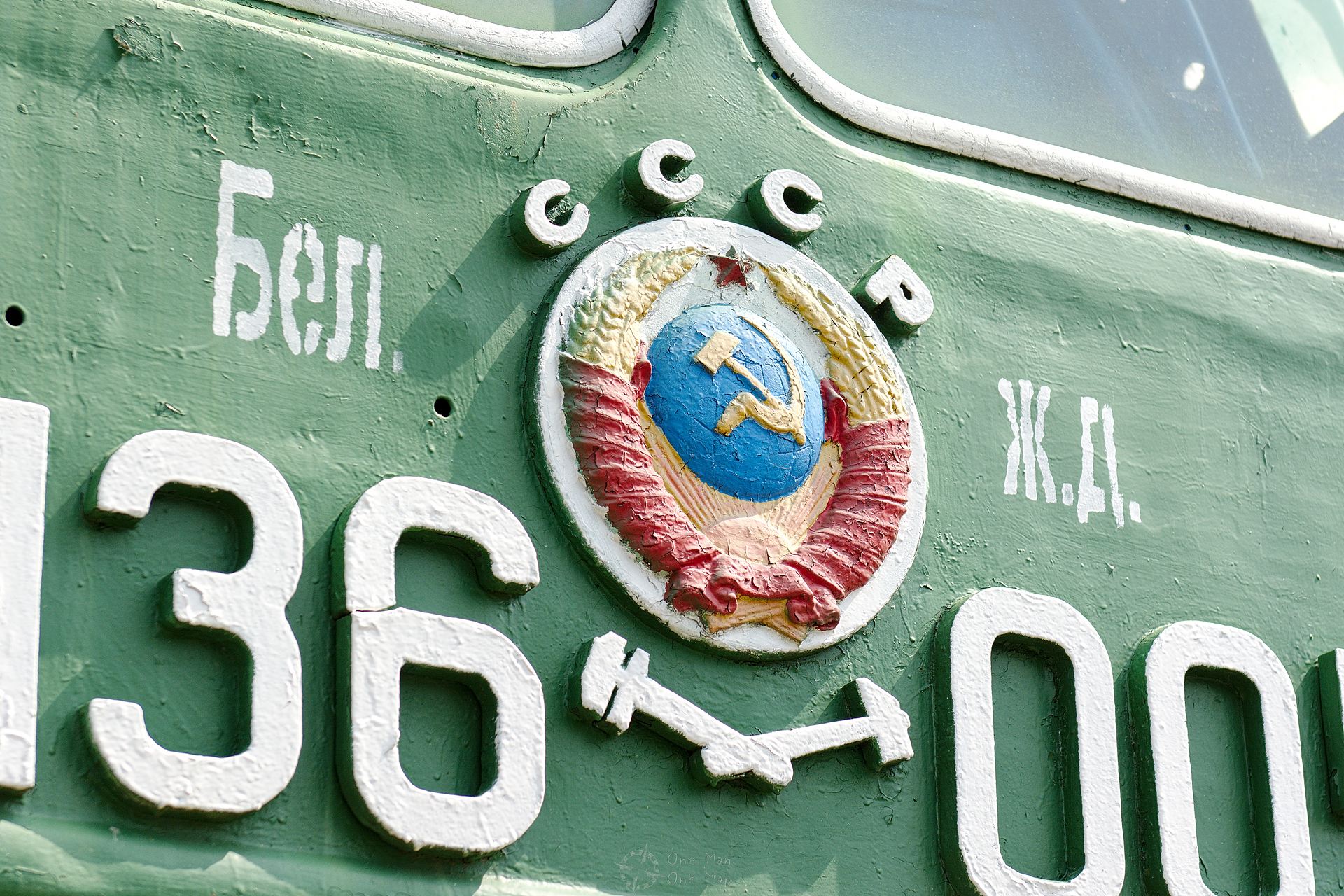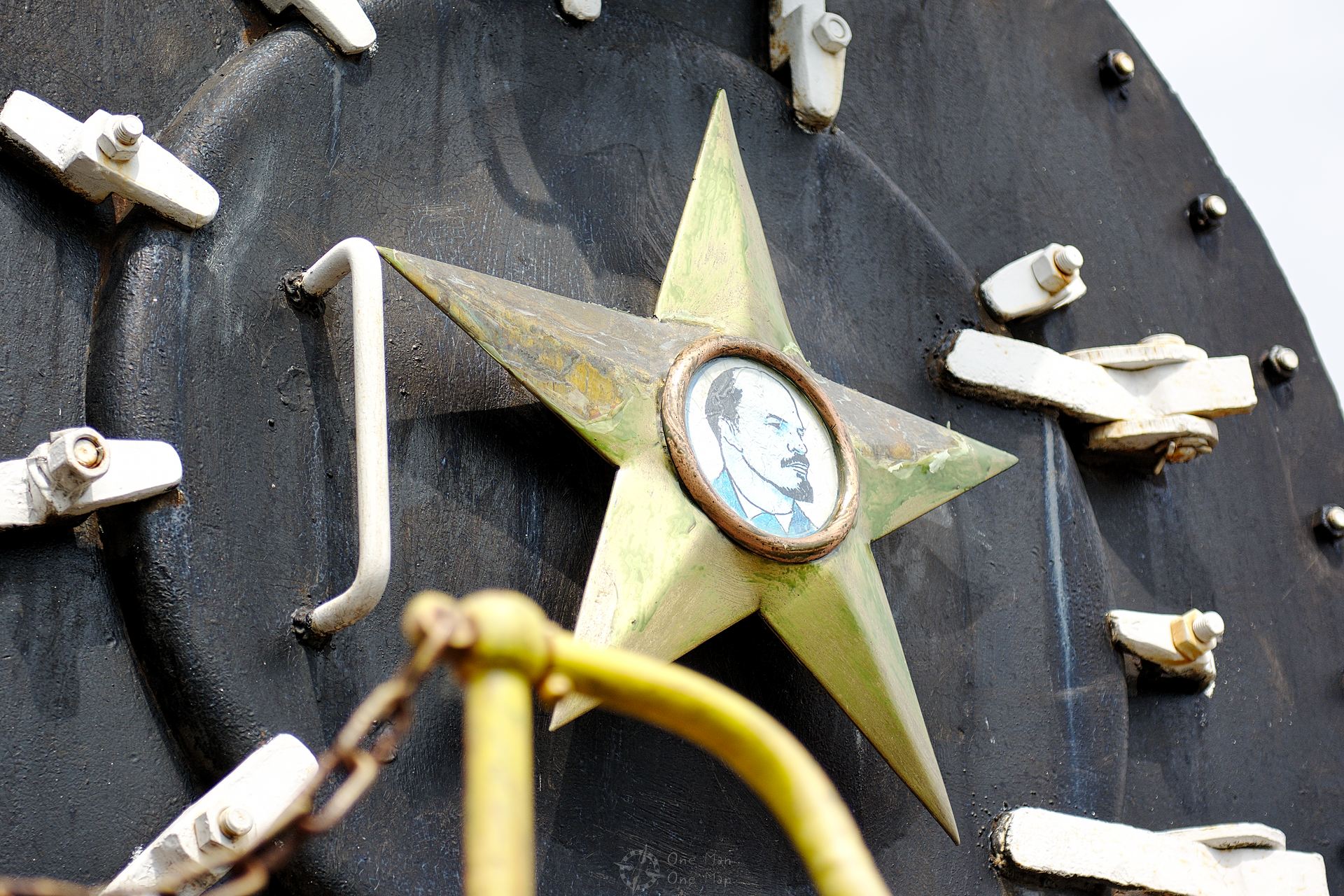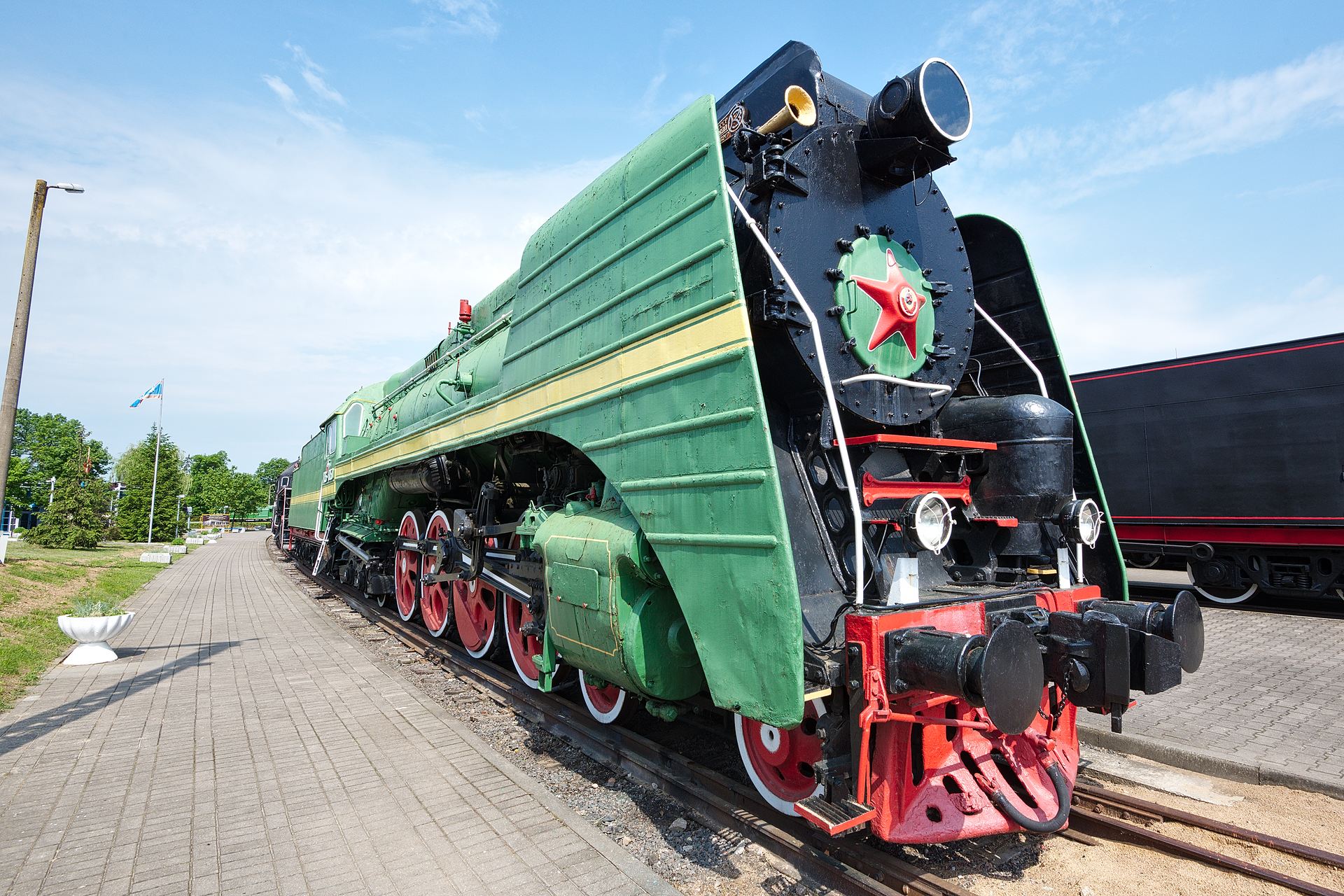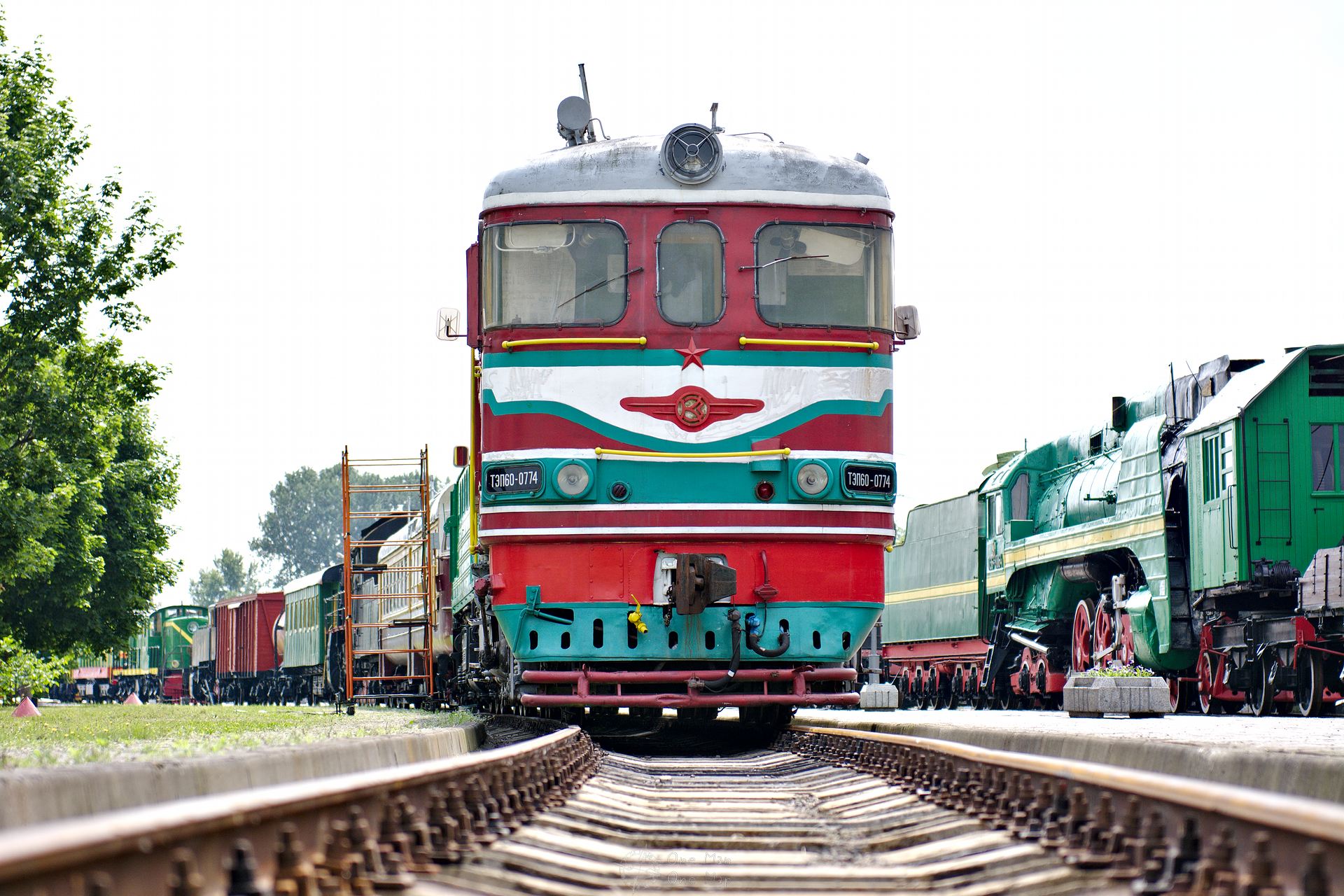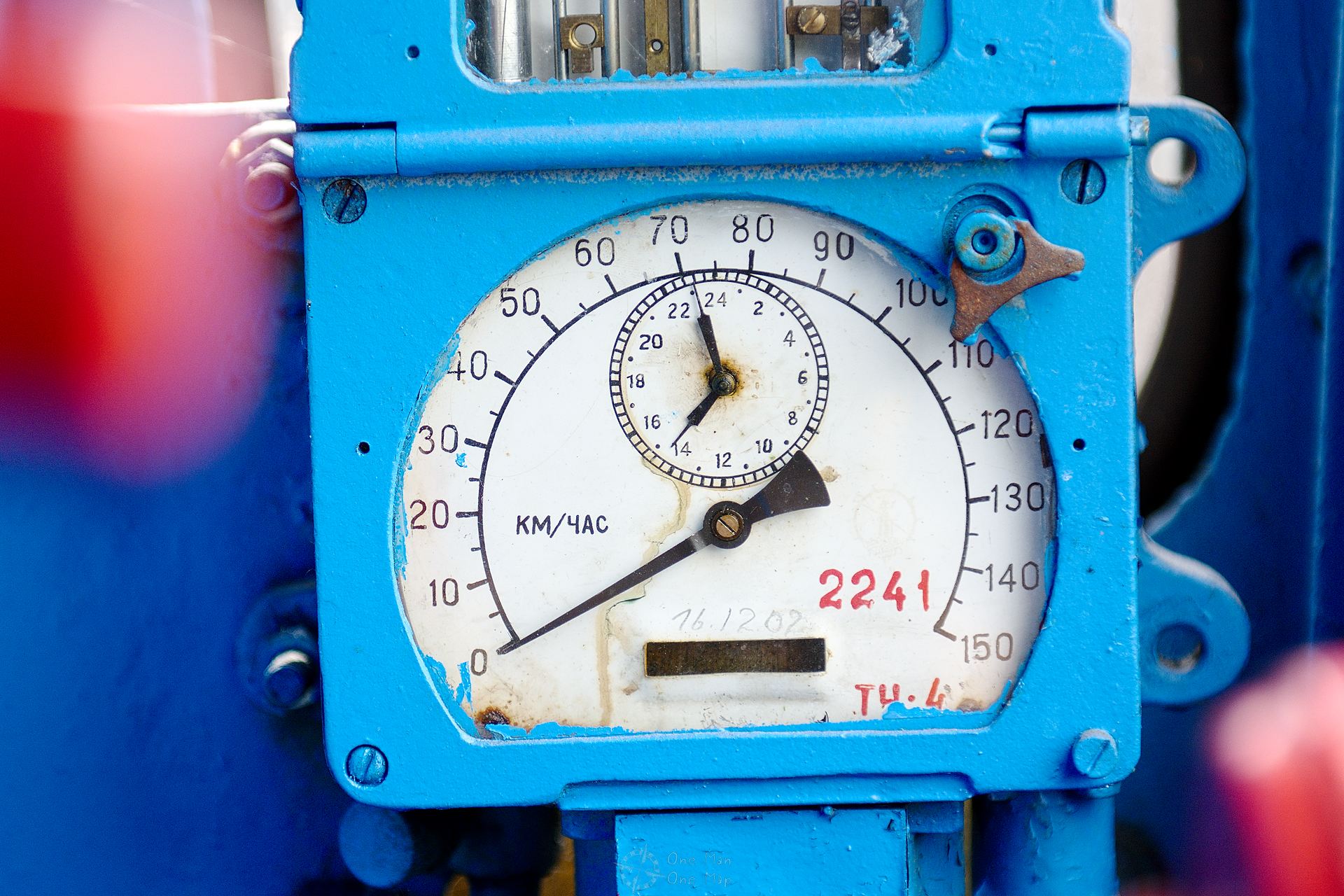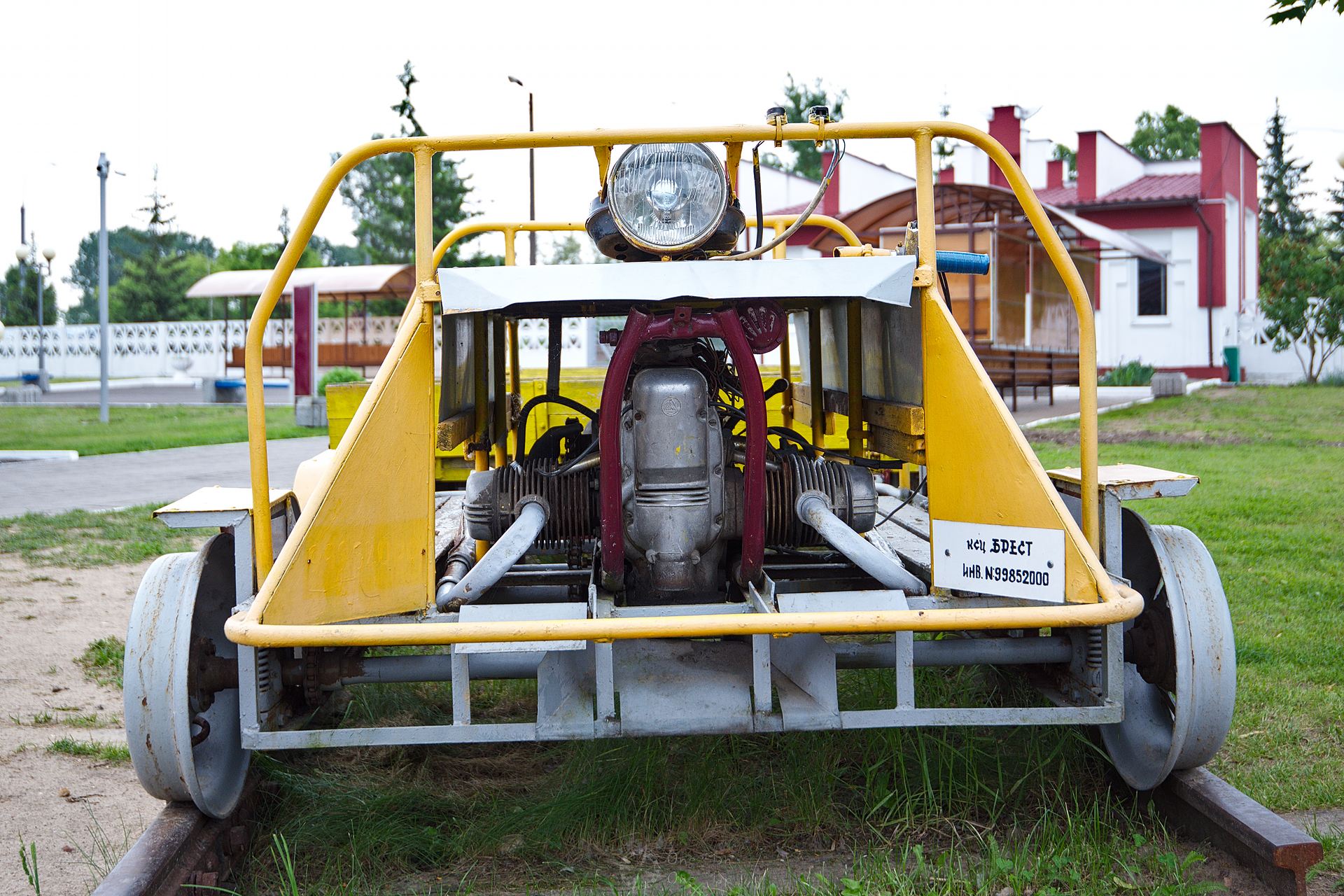Dieser Artikel ist auch auf Deutsch verfügbar. Click here to find out more about Belarus!
The last stop on my round trip through Belarus was Brest (not to be confused with the probably better well known French port city of the same name). Brest was first mentioned in a document in 1019 and was therefore 999 years old at the time of my visit. The 1000th birthday will be officially celebrated on July 29 and 30, 2019. And how to better celebrate such a birthday than with a revival of the liberation battle against the Third Reich in the Second World War? Of course, what else 😉
The Red Army and the Germans will fight each other again for the amusement of the audience in front of the beautiful Niemcewicz estate. Certainly great fun for the whole family, and a good reason to visit Brest in 2019. If you would like to get an idea of what the reenactment will probably look like, have a look at the posts on the Minsk War Museum and the Stalin Line…
Like all other places in Belarus, Brest has changed hands several times over the centuries. The city has often been the site of important negotiations, for example the Church Union between the Catholics and the Orthodox was signed here in 1596. Being burned down and devastated countless times by foreign or even the own troops was certainly less fun. Hardly anything besides the Brest Fortress has survived the Second World War.
Brest is located directly at the border with Poland and thus also at the outer border of the European Union. The border is heavily guarded, border police and military maintain large barracks. Roads and dirt paths towards the border rivers Bug and Mukhavets are usually closed off about one kilometer before the border. The security measures are probably less directed against foreigners and more against the own citizens. Employees of state wood processing enterprises are forbidden by law to leave Belarus and go for better-paid jobs in Russia, for example.
The cityscape was also quite militaristic in character. Advertising posters of the armed forces with inscriptions like ВЫ ЗДАБЫЛІ МІР – МЫ ЗБЕРАЖОМ (“You wish for peace – we secure!”, if my Belarusian does not deceive me) were placed on the sides of the streets.
Opposite the Garison cemetery and not far from the railway line towards Poland, there is a clearly recognisable monument dedicated to the so-called “atomic soldiers”. On September 14, 1954, a Soviet bomber dropped an RDS-4 atomic bomb, codenamed Tatyana, over the test site north of Totskoye in present-day Russia. Shortly after the explosion, 45,000 soldiers in protective clothing and gas masks marched through the contaminated area to test strategies for warfare after a nuclear attack.
The First of May Park (ПКиО имени 1 мая)
In the workers and peasants state, Labour Day (May 1st) was traditionally one of the highest holidays. It is therefore not surprising that the First of May Park is the largest park in the city. Besides the usual rides, there were also two small lakes, an amphitheatre and some artworks on display.
Don’t let yourself be disturbed by some random horse grazing in the park…
The Brest Fortress
In the 18th century, Poland, Lithuania, Russia and even Sweden fought fierce battles for the former Brest Castle over and over again . After the conquest of the city by the Tsarist Empire in 1795, the castle and large parts of the old town were destroyed to make room for a gigantic fortress. At that time the star-shaped walls and canals protected the whole town, today the fortress is located in the southwest of the large city, directly on the border to Poland.
Brest was conquered three times by the Germans: in 1915 during the First World War, in 1939 during the Invasion of Poland, and two years later at the beginning of the invasion of the Soviet Union (Operation Barbarossa). Cut off from the Red Army and abandoned, the Soviet defenders continued to fight fiercely for six days in June of 1941. Only aerial bombing finally led to the German victory. Hitler and Mussolini visited the conquered fortress shortly after in August 1941, under very strict security measures.
In official Soviet history, however, the six days turned into a whole month in the 1950s, since the fortress had officially been defended “as long as a single man had continued to fight”. Apparently this man was Major Peter Mikhailovich Gavrilov (Пётр Михайлович Гаврилов). According to the official narrative, he was captured on the 32nd day of the siege.
In 1955 a small museum was set up on the ruins of Brest Fortress. In 1965, the fortress was awarded the title of “Hero’s Fortress” for the “mass heroism of its defenders in the Great Patriotic War”, similar to the already existing “heroic cities” (город-герой). This award led to the construction of a gigantic memorial complex on the core area of the former fortress.
Press Play to start the recording.
Above the entrance there is a 44 meter long and ten meter high concrete block with a star-shaped opening. In the dark interior, the same recording was played every ten minutes: first came the sound of a ticking clock, followed by fighting sounds and a song by Isaak Ossipovich Dunajewski (Исаак Осипович Дунаевский Дунаевский) which was broadcast as a “tuning aid” on the frequency of the state radio station before the actual broadcasting started.
This was followed by the proclamation of the state of war by the famous radio announcer Yuri Borisovich Levitan (Юрий Борисович Левитан) and the well-known song “The Holy War” (Священная война) by Alexander Vasilyevich Aleksandrov (Александр Васильевич Александров), who was also the composer of the anthem of the Soviet Union.
The 54 meter wide and over 30 meter high monument “Courage”, which shows a soldier in front of a flag, and the 100 meter high obelisk with the eternal flame were hard to miss. The obelisk, weighing almost 600 tons, was assembled lying on the ground in the summer of 1971 and then erected in one piece within six hours using a set of winches.
The sculpture titled “Thirst” almost dwarfed in comparison, but seemed to bear a greater significance for many visitors than its bigger brothers. No wonder: it symbolizes the dramatic scenes which were caused after the water supply to the fortress had been interrupted on the very first day of the siege. The Russian campaign did not take place in the middle of winter, as often thought, but during excellent summer weather.
In June of 1941, a historic heat wave swept through Europe. Soviet soldiers, women and children had to endure extreme temperatures without water inside the fortress. The machine guns also were liquid cooled. The water in the moats, often just a few metres away, became inaccessible due to enemy fire, and those who dared to venture out for a few drops paid for it with their lives. After the war, numerous perforated helmets and water bottles are said to have been found in the trenches.
The Garrison Church often changed sides within hours during the fighting. Although the outside of the building has been renovated, its interior remained largely in the conditions from back then. The first service took place here only in 1991, 50 years after the siege.
To this day, Brest has remained the only “Hero Fortress”. The title” Hero City” was awarded to twelve cities until the end of the Soviet Union, including Minsk.
I recommend to spent more than two hours around the fortress. The monument makes up for just a small part of the actual former complex, there are moats and other defensive structures on the area, and most of it had been left to its own devices.
The moats were a paradise for nature lovers like me. There was quacking, bouncings, fluttering and wriggling everywhere. I never had to wait for long to find an interesting subject.
Grenzbahnhof und Eisenbahmuseum
Border station and Railway Museum
Brest is still the most important railway station for cross-border traffic between Europe and Russia. There is a very simple reason for this: the railway line coming from Poland uses the European gauge of 1435 millimetres, but Belarus and Russia use the Russian gauge of 1520 millimetres. The main station in Brest has tracks of both gauges, so goods can just be transferred. Similar situations exist only on the European borders with Ukraine and Lithuania.
In the case of passenger trains, the wagons are lifted into the air with the aid of a hydraulic system and placed on new, wider bogies. This time-consuming process is increasingly being replaced by the use of special wagons with variable gauge bogies.
Today the Brest train station consists of two separate parts for local and long-distance traffic. The large main building had to be rebuilt twice after it had been destroyed during both world wars. If you’re somewhat familiar with Soviet architecture, you will immediately recognize the typical architectural style of the 1950s under Stalin’s rule. Only the telecommunications technology and the range of goods in the shops were somehat more recent.
The entire timetable for all weekdays fit on a single large display board. The famous international direct trains to Europe with the numbers 009/010 (Warsaw-Moscow), 013/014 (Berlin-Moscow), 017/018 (Nice-Moscow), 021/022 (Moscow-Prague) and 023/024 (Moscow-Paris) were also listed.
The railway not only shaped the cityscape, but also the history of the city. In the middle between the First of May Park and the fortress is a very interesting railway museum with exhibits from various eras.
By 1916, the railway network in the Tsarist Empire had grown to a length of 50,000 kilometres, and the Trans-Siberian Railway had just been completed. When the October Revolution rolled over the country in 1917, the railway formed the logistical backbone for the civil war and the subsequent foundation of the Soviet Union. Trotsky, one of the leading organizers and as People’s Commissioner founder and leader of the Red Army, spent much of the civil war in his armored train.
By 1940, the length of the network had been doubled to more than 100,000 kilometers; at the time of the largest expansion, almost 145,000 kilometers were in operation. Millions of people worked for the railroad even at Children’s Railroads. For comparison: the whole of Europe has about 150.000 kilometers of tracks today, the USA more than 250,000. FOr an area as big as the Soviet Union, 145.000 kilometers was therefore not that much. But on the other hand most of the population has always lived East of the Ural mountains.
“Communism is Soviet power plus electrification of the whole country,” is how Lenin defined the main goal of his party after the October Revolution. Full-scale electrification of the railways throughout the Soviet Union was never achieved. Various series of steam locomotives were either developed domestically, purchased abroad or withdrawn from Germany as reparations. Under many communist stars there is still a hidden German symbol, and more than one bogie in the museum still had “German Reich” written on it.
Even today the old Russian diesel locomotives with their typical fronts and the painting, which can be seen from afar, still serve well in many former Soviet republics. The heavy, powerful diesel engines can cause entire bridges to vibrate when passing through. An experience in itself 🙂 Fuel consumption and, above all, environmental pollution are of course not comparable with the current state of the art. But in many cases there is simply no money for better alternatives.
Interesting curiosity: A rail motorcycle, welded together from a motorcycle and matching steel parts 😯
This post concludes my tour of Belarus. All existing articles about the country and many more pictures can be found here. The next post will take us to a different country in the north of Europe… 🙂
This post was written by Simon for One Man, One Map. The original can be found here. All rights reserved.

